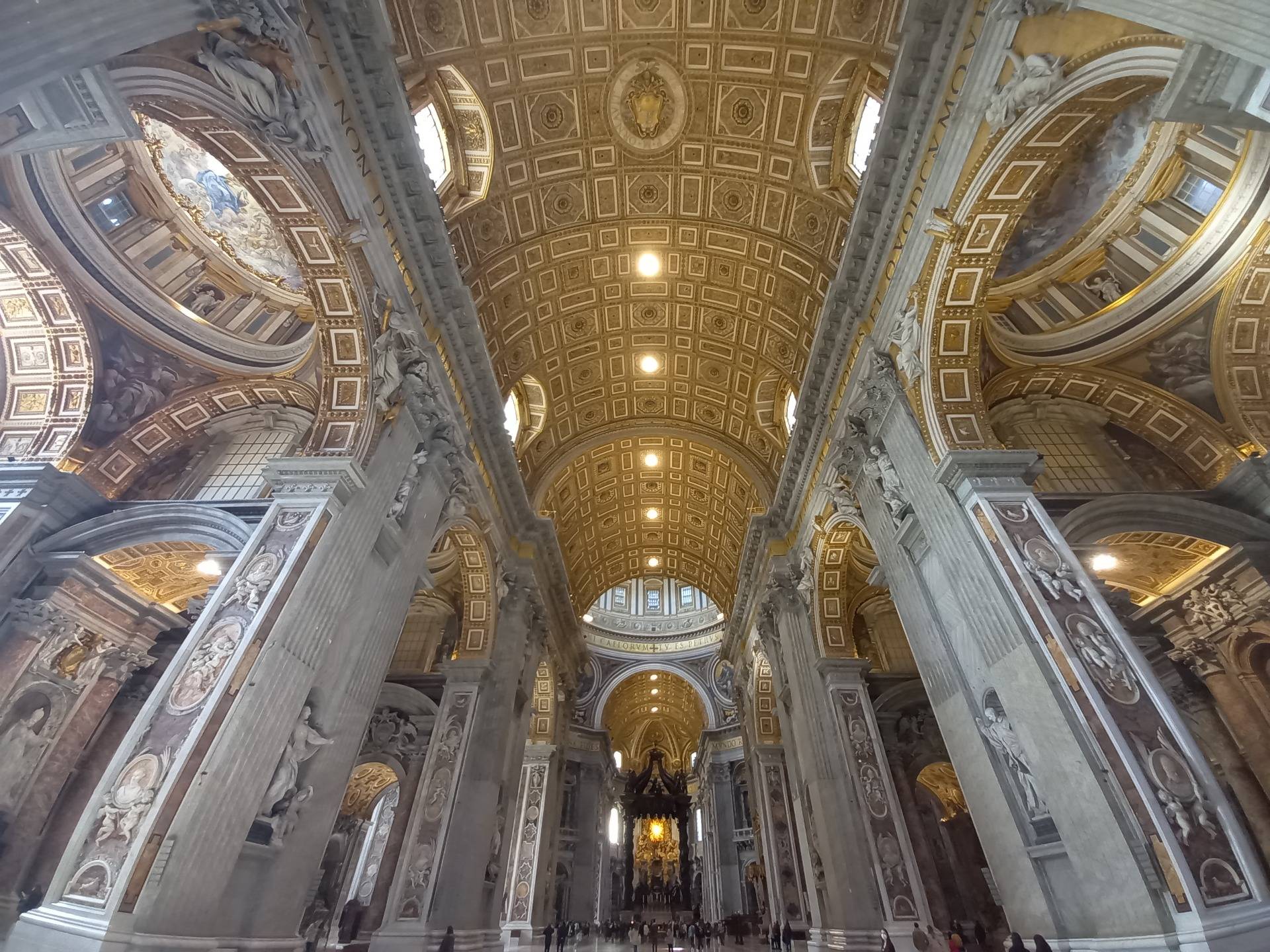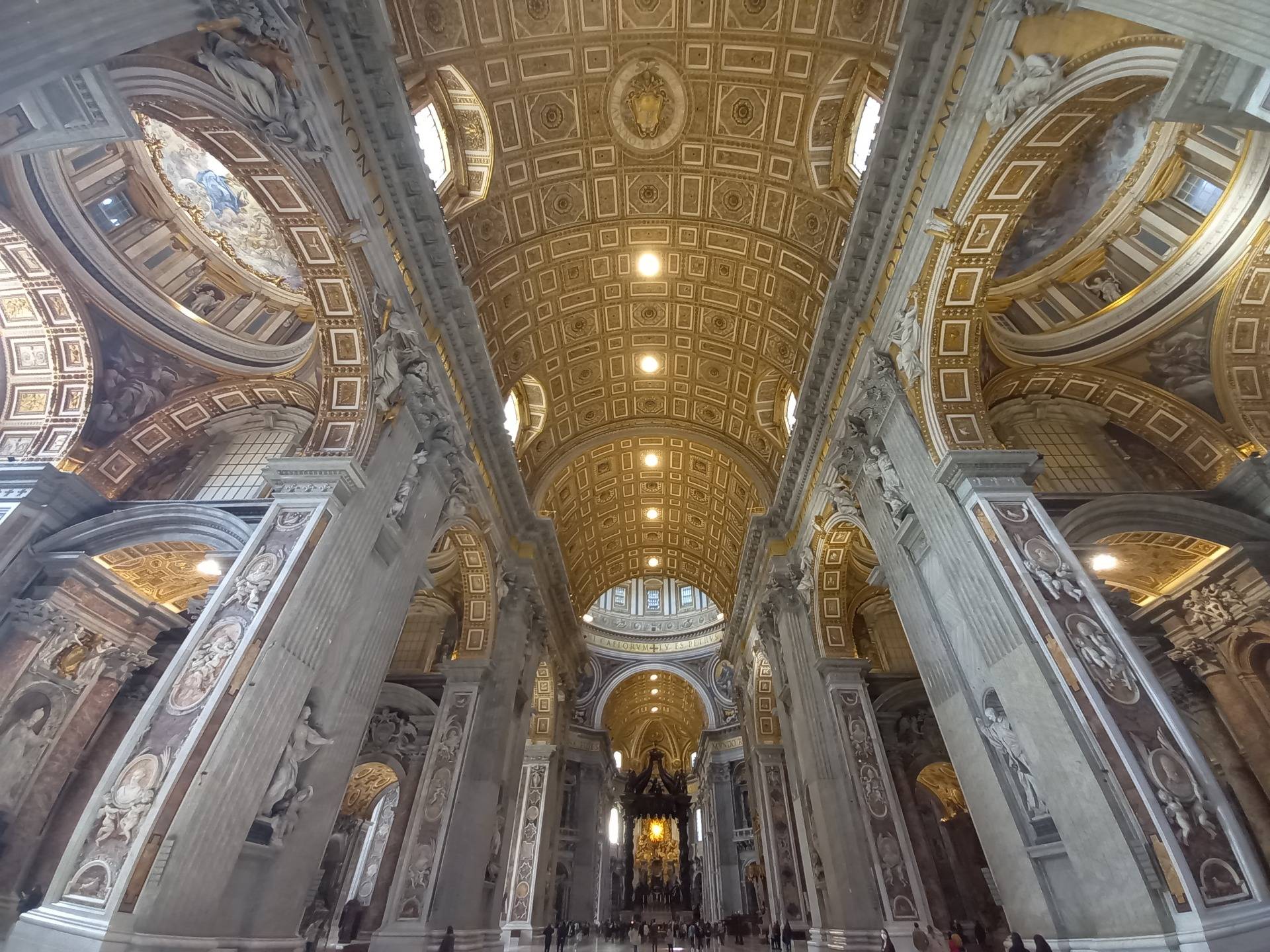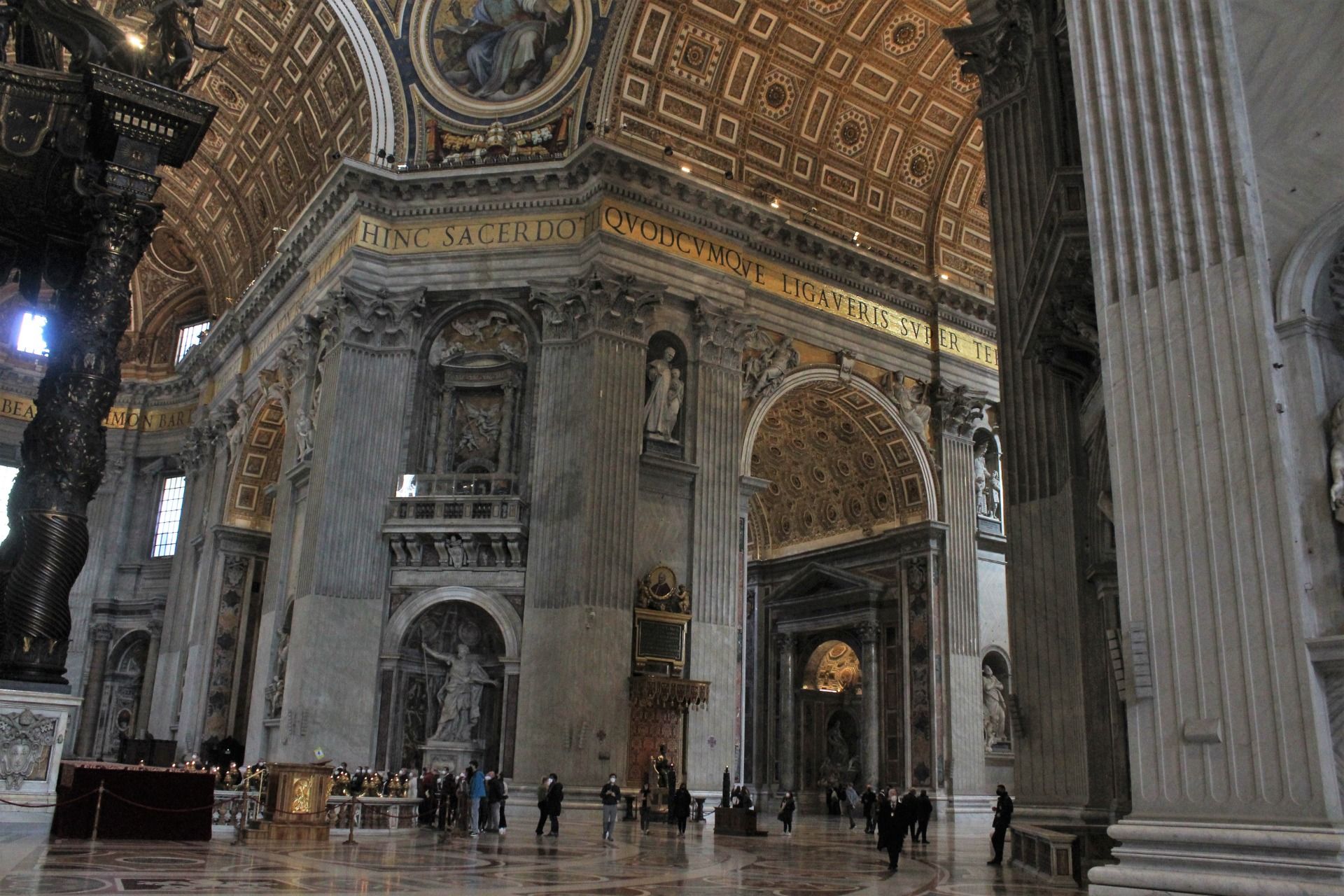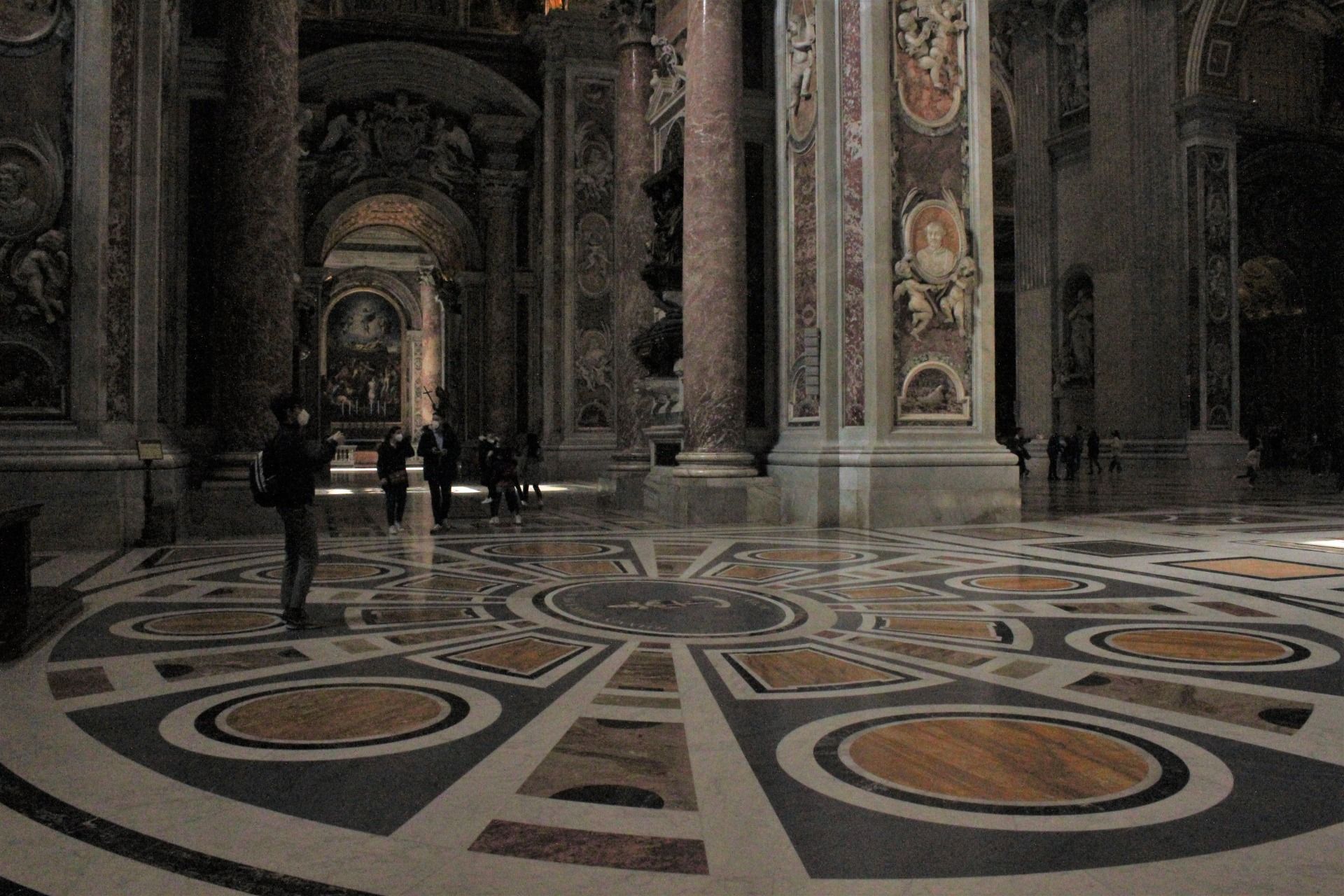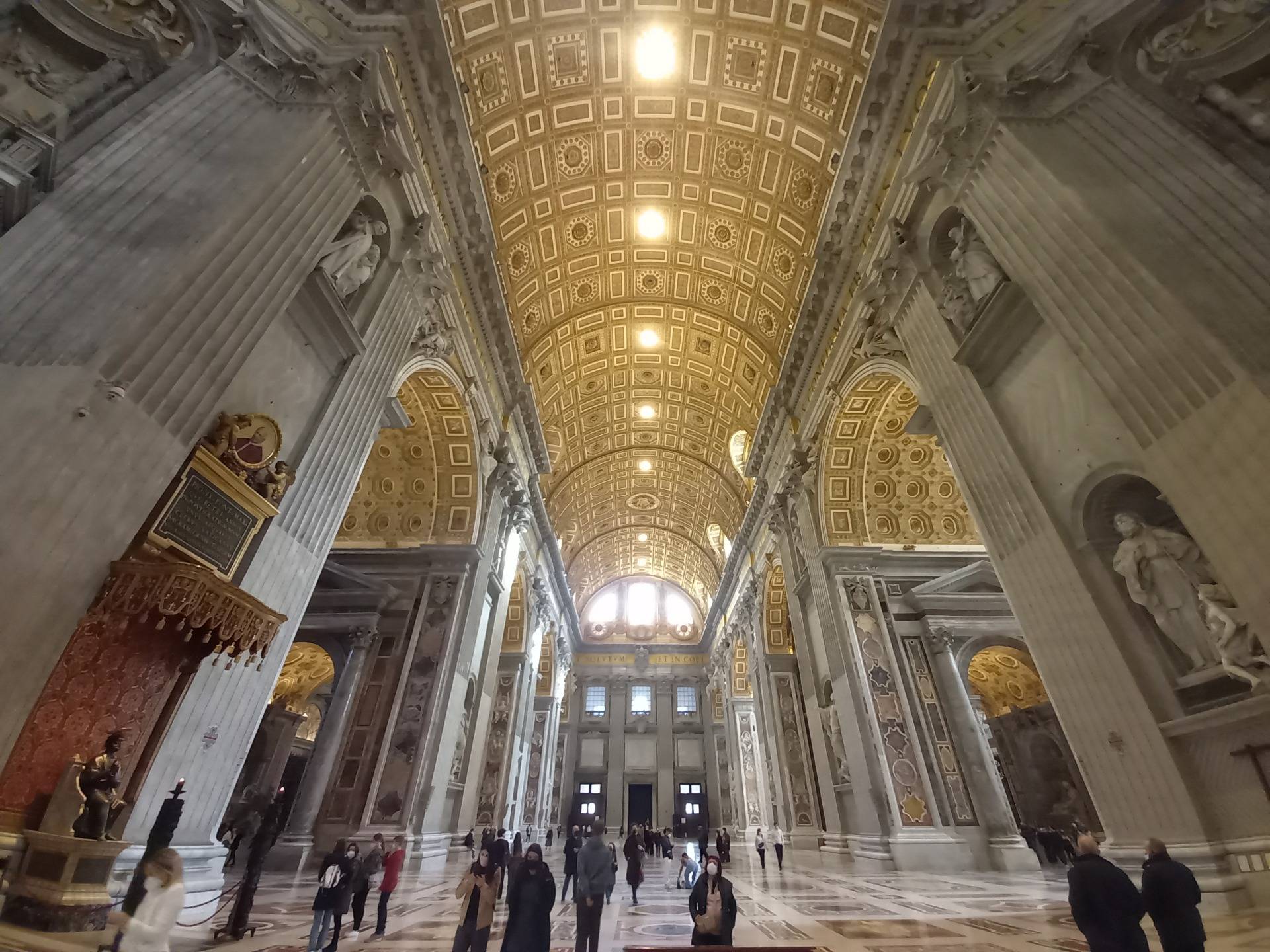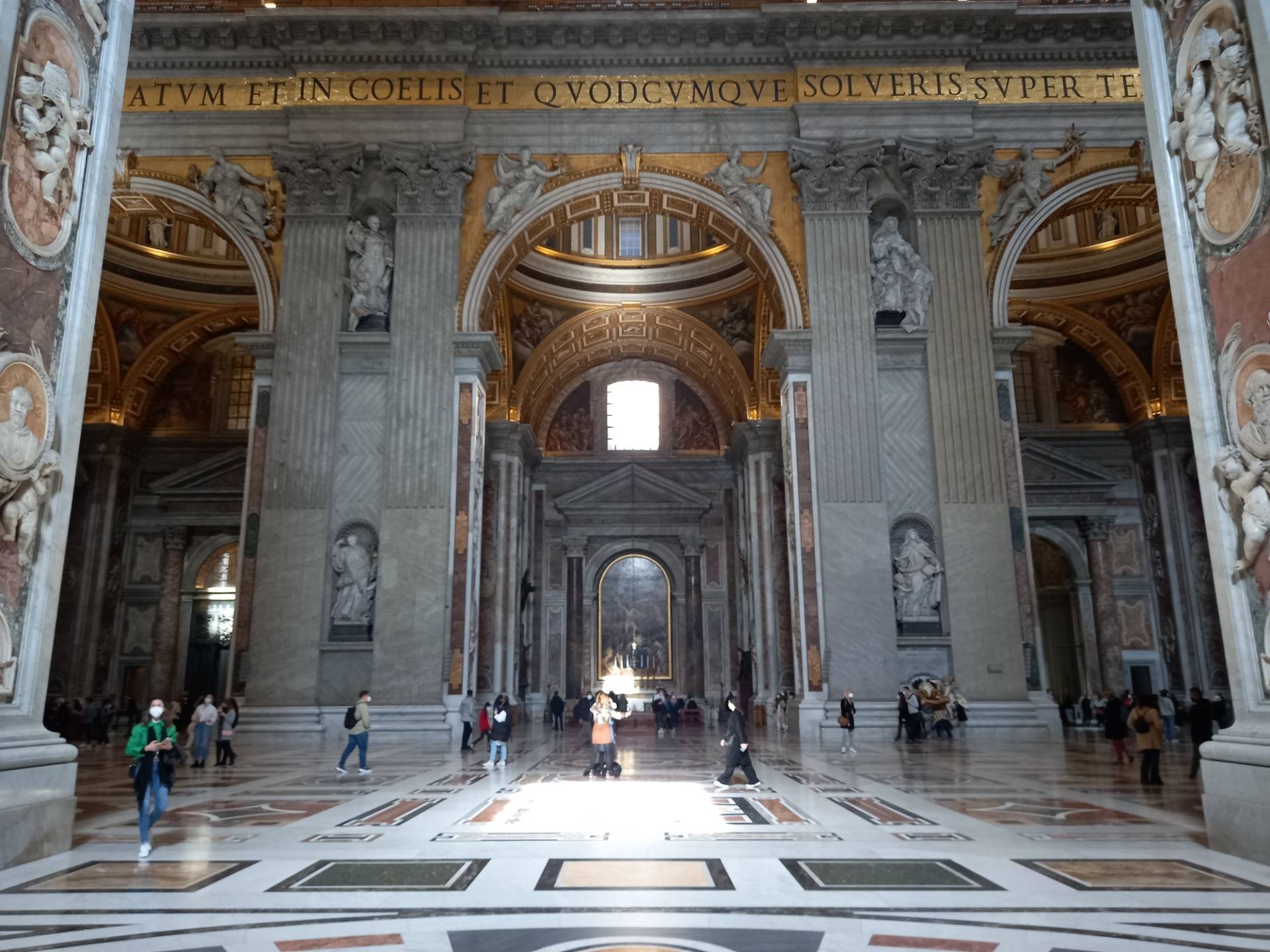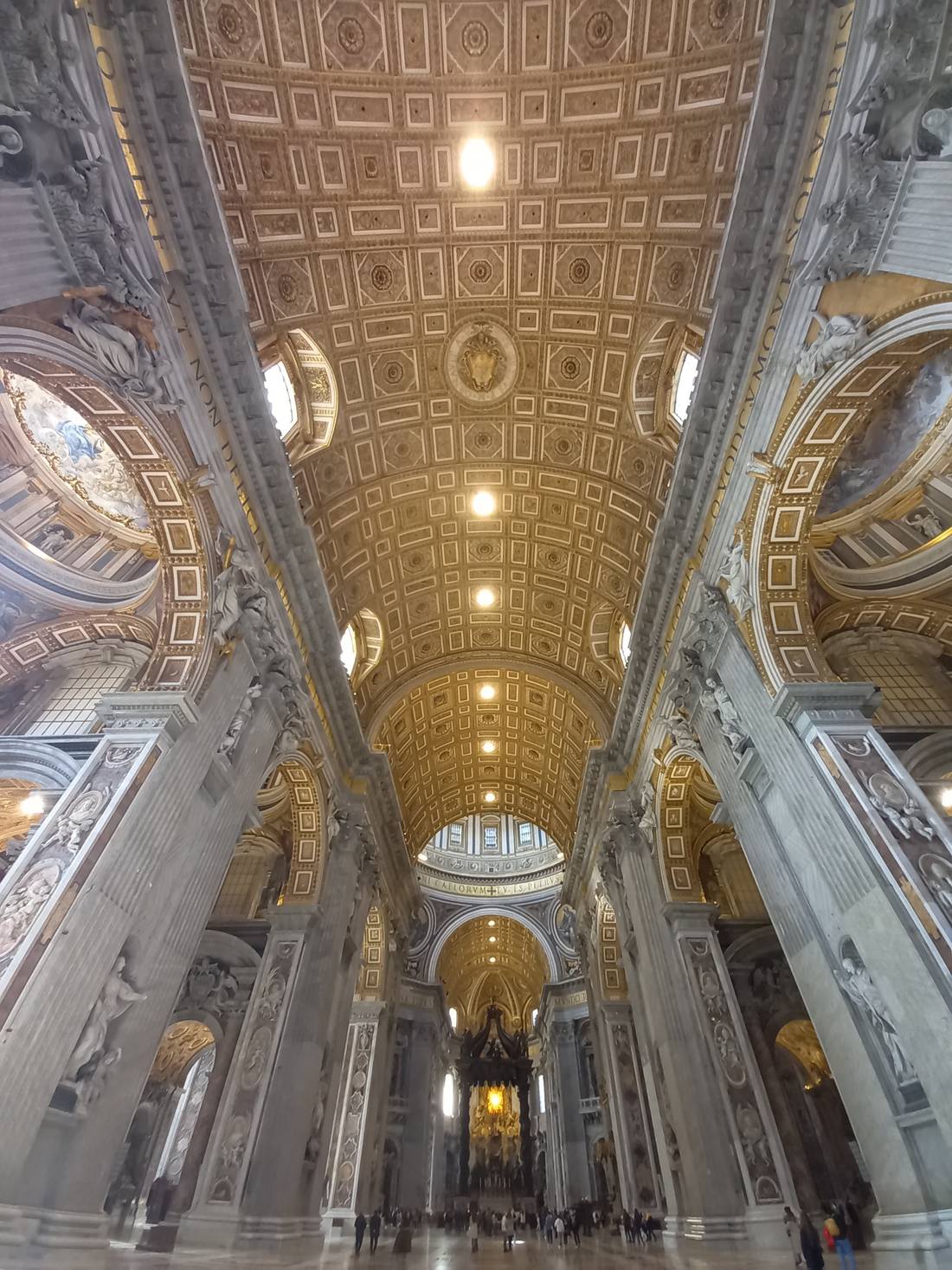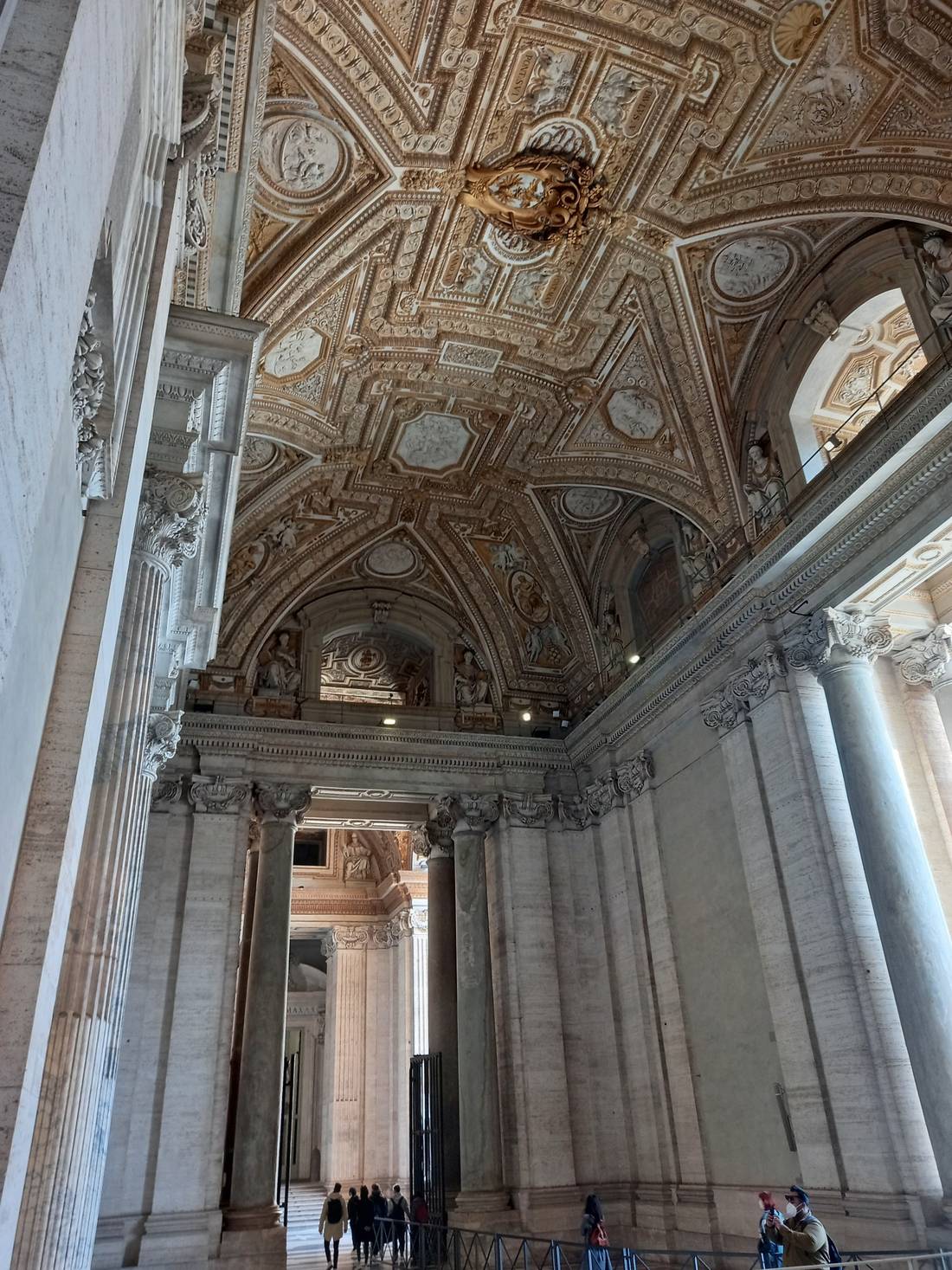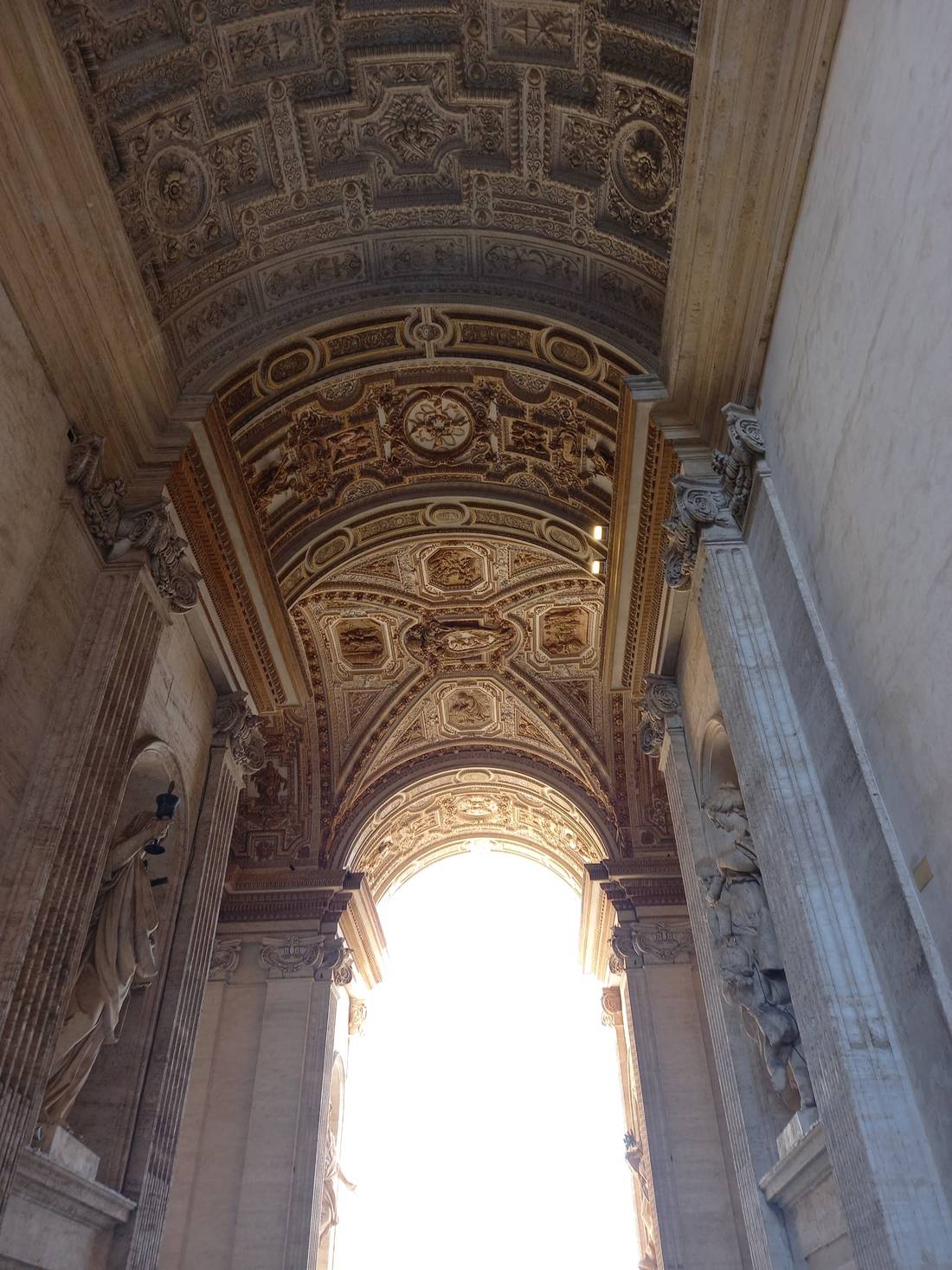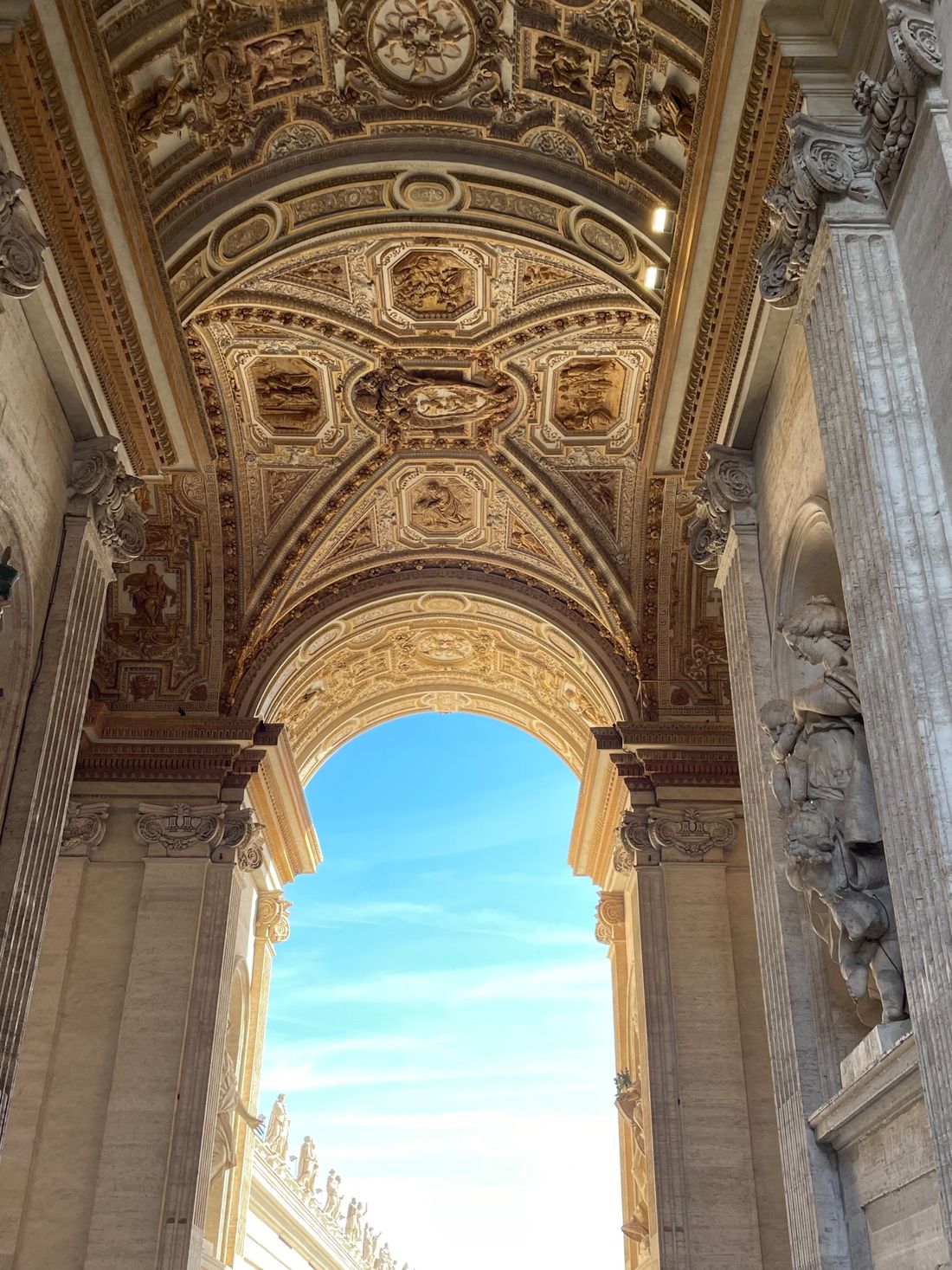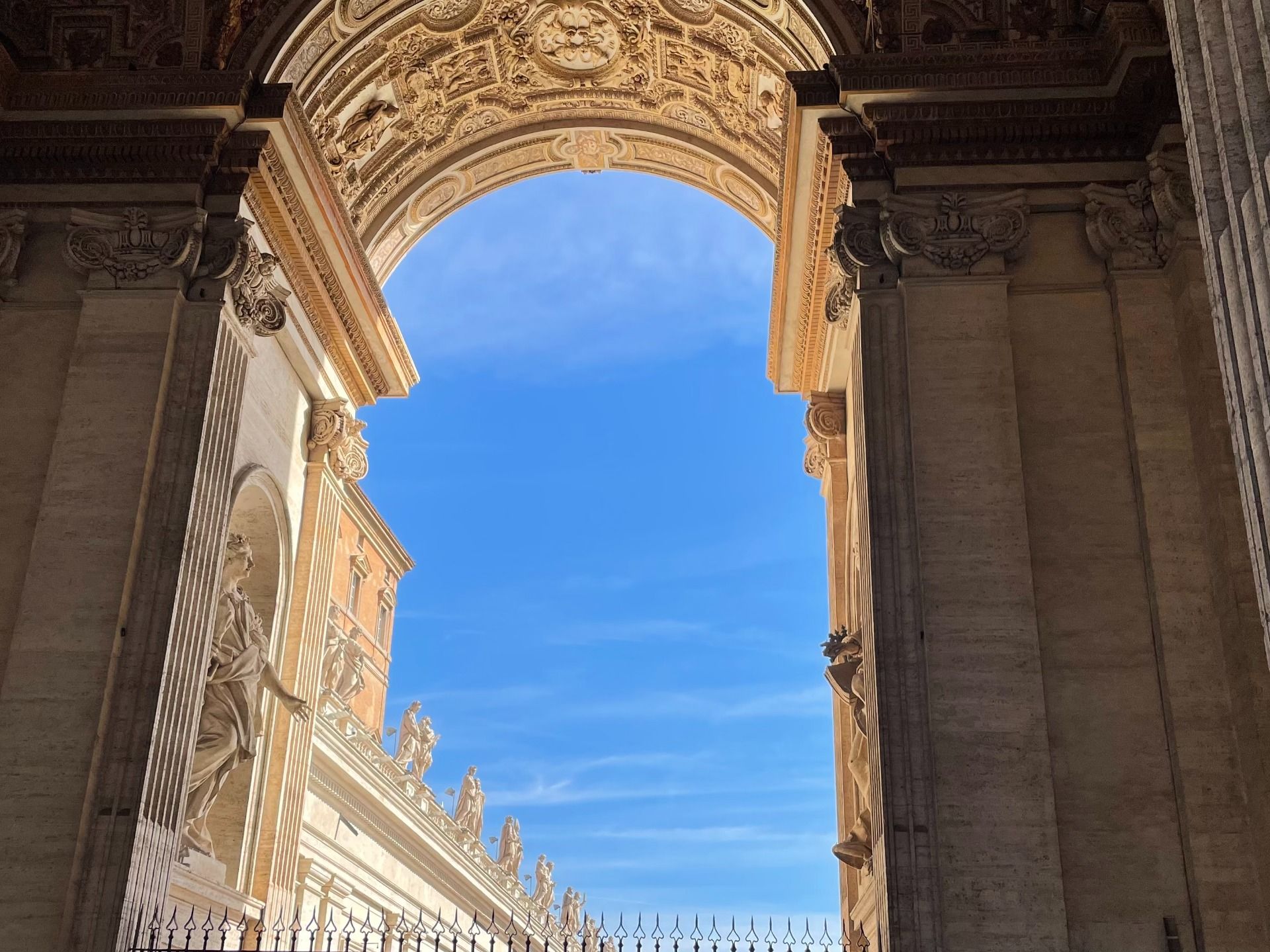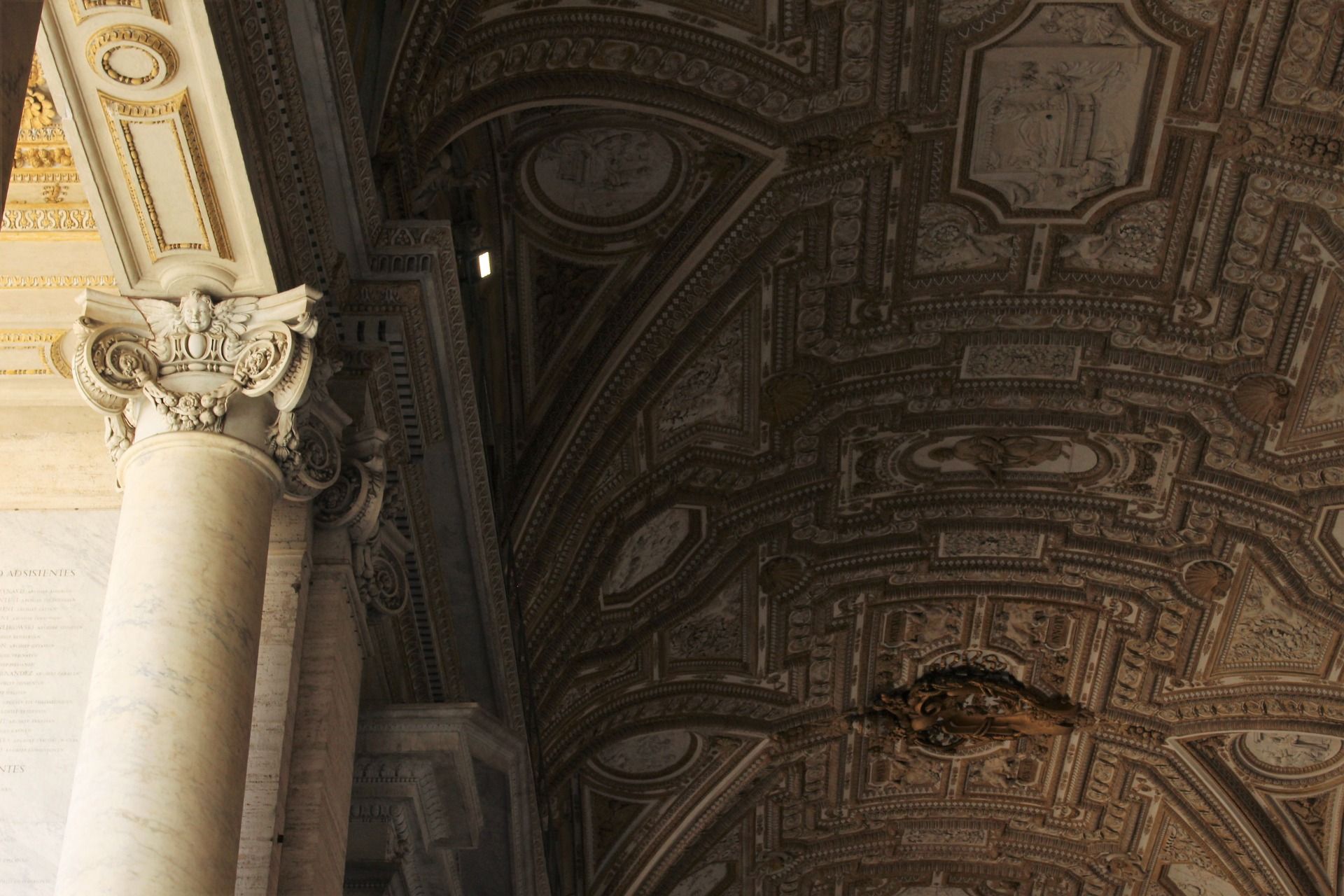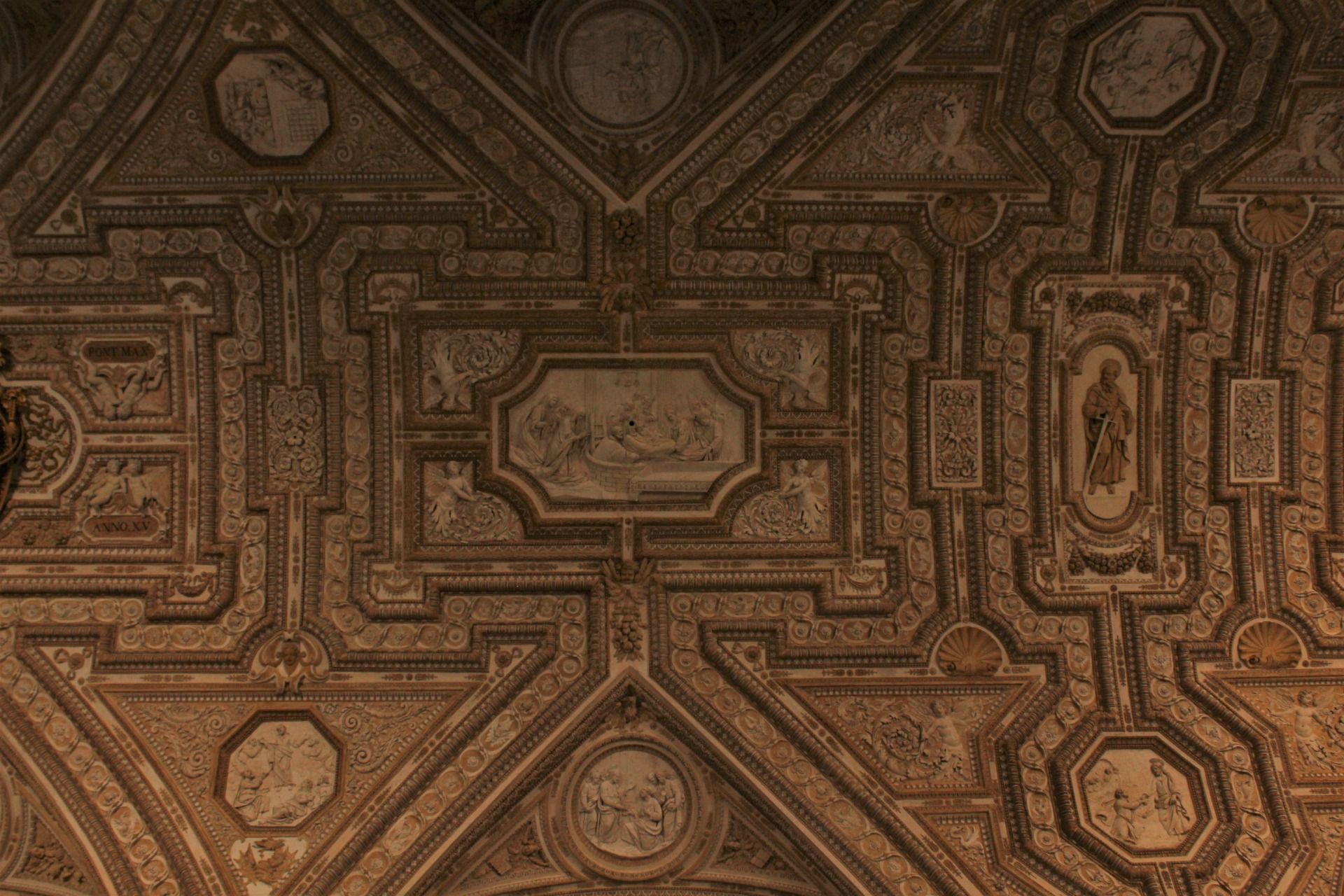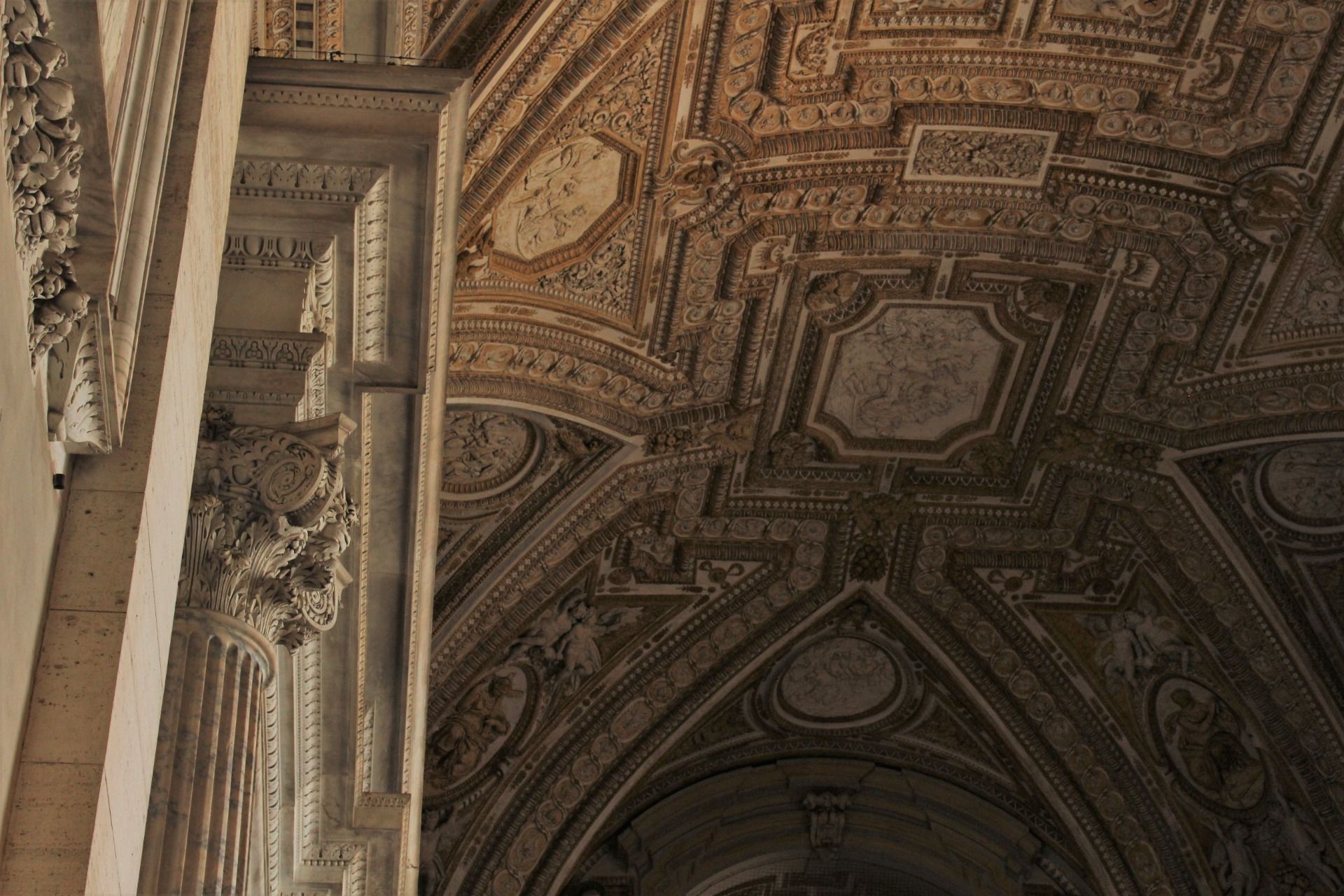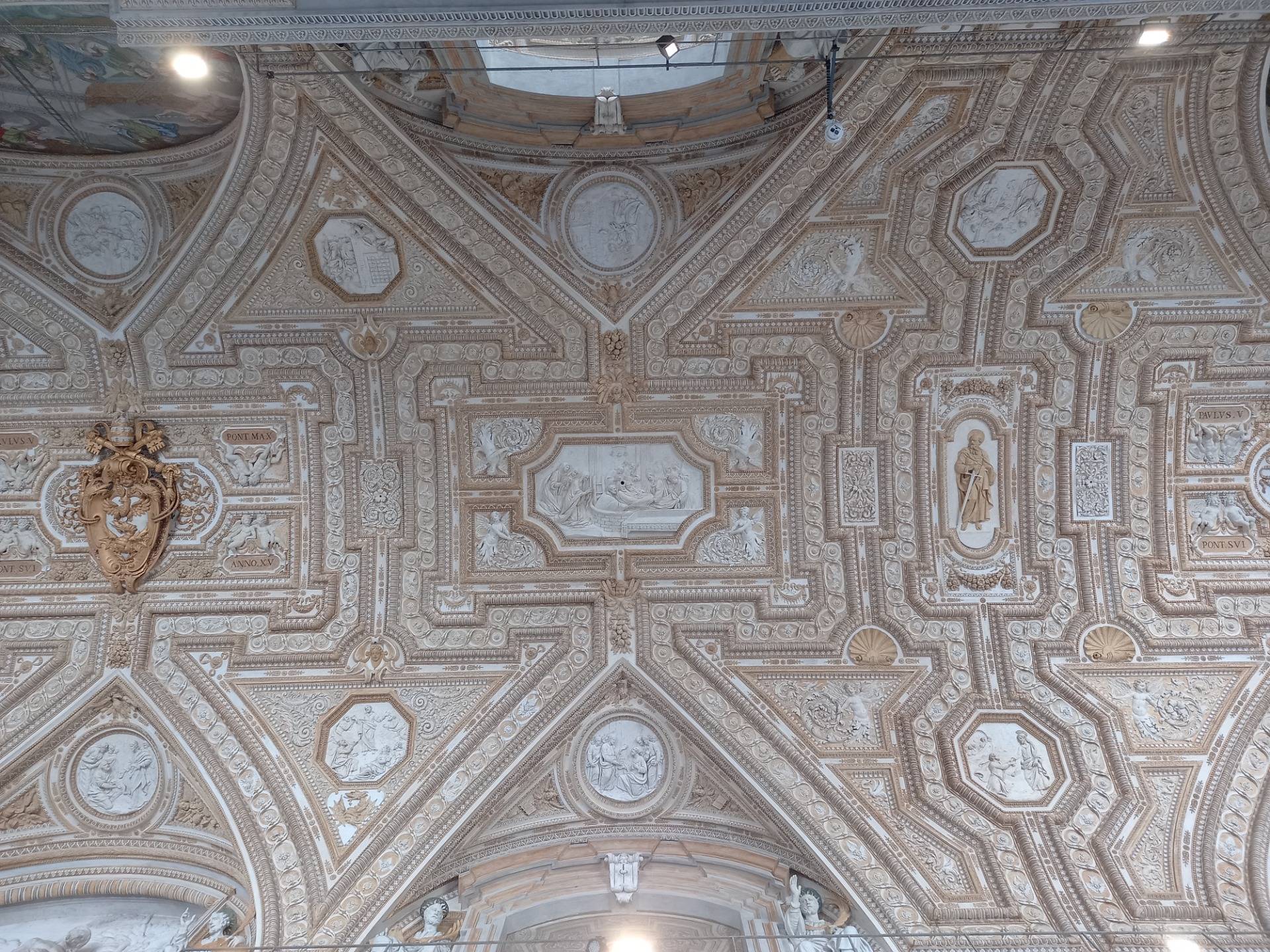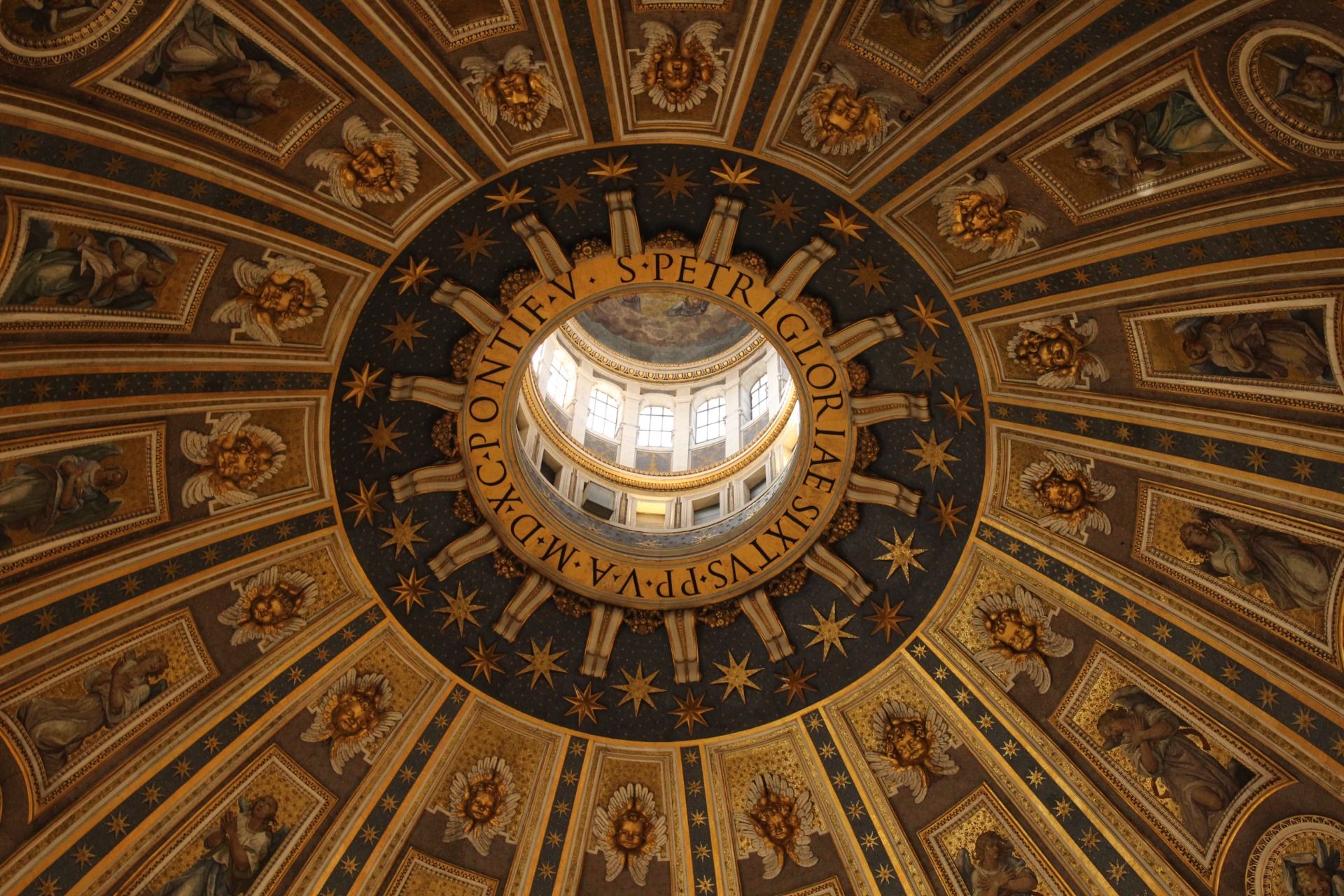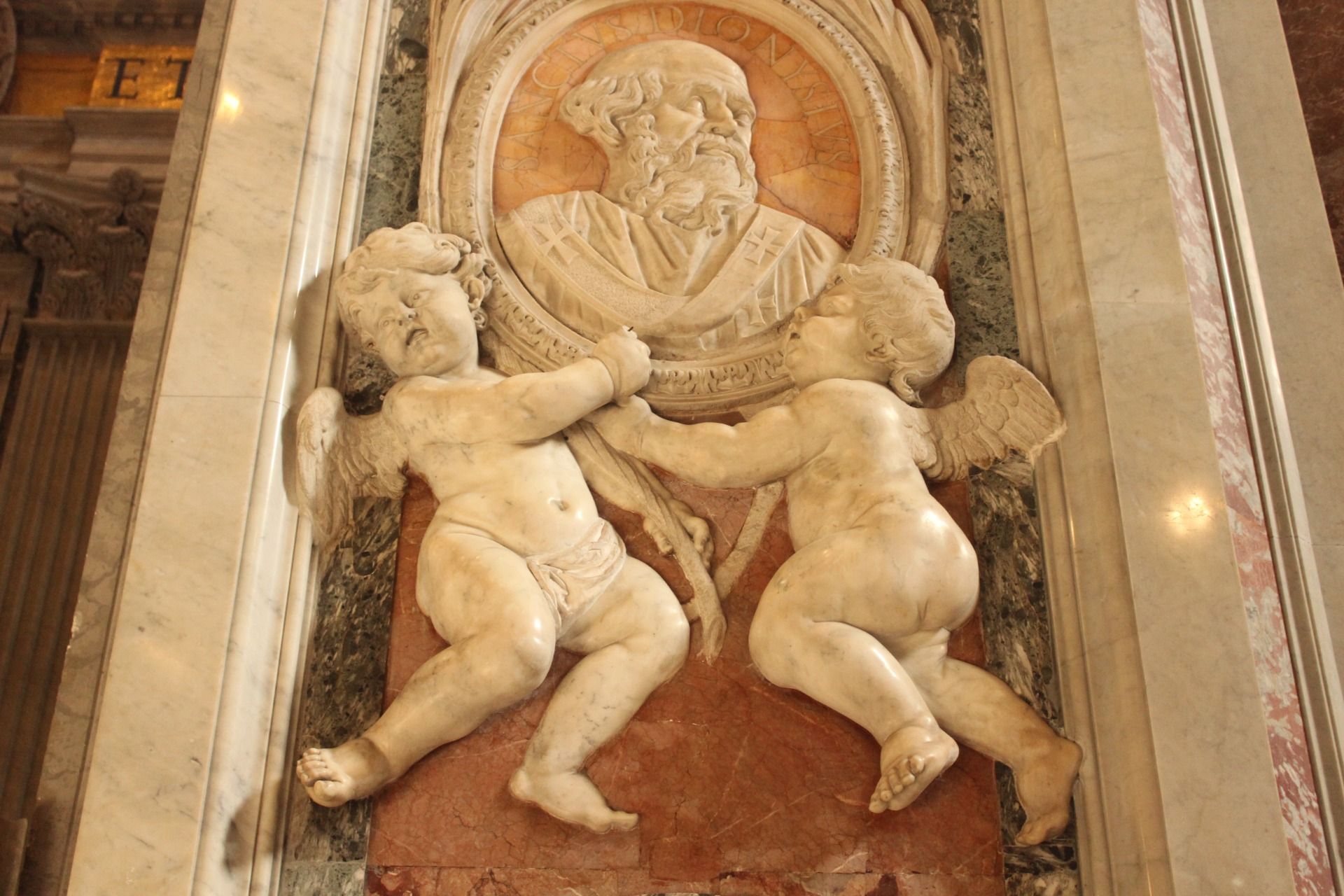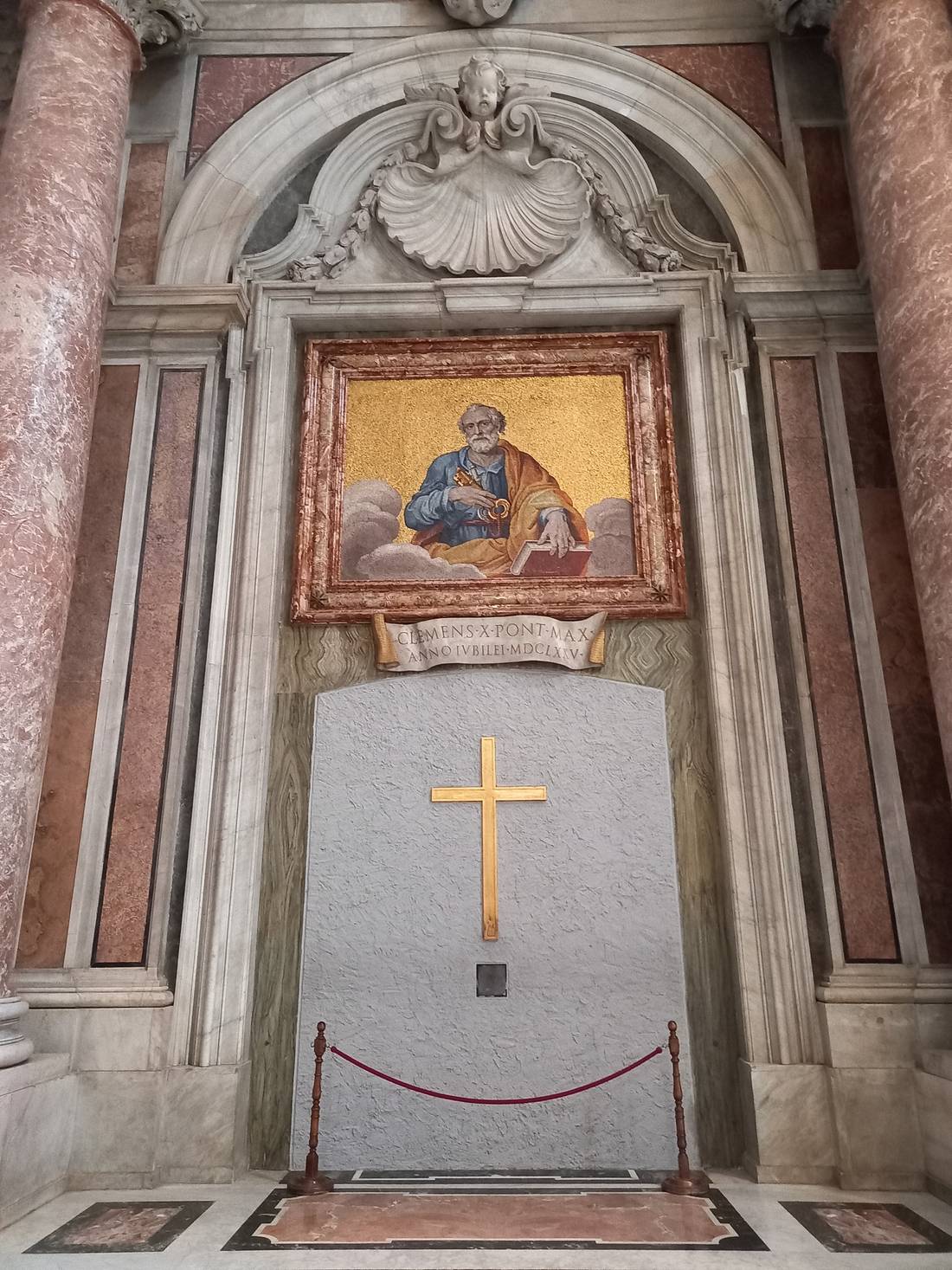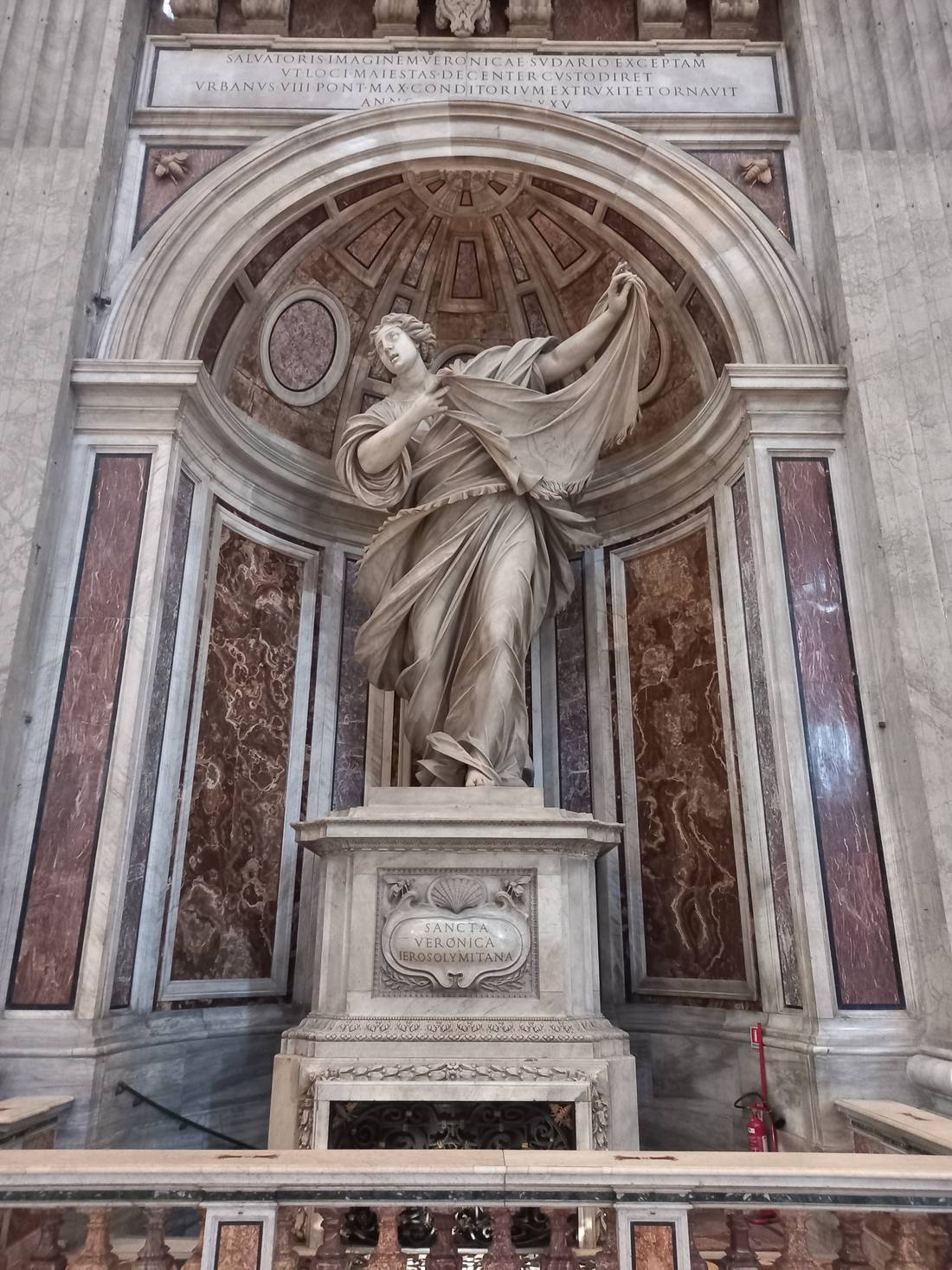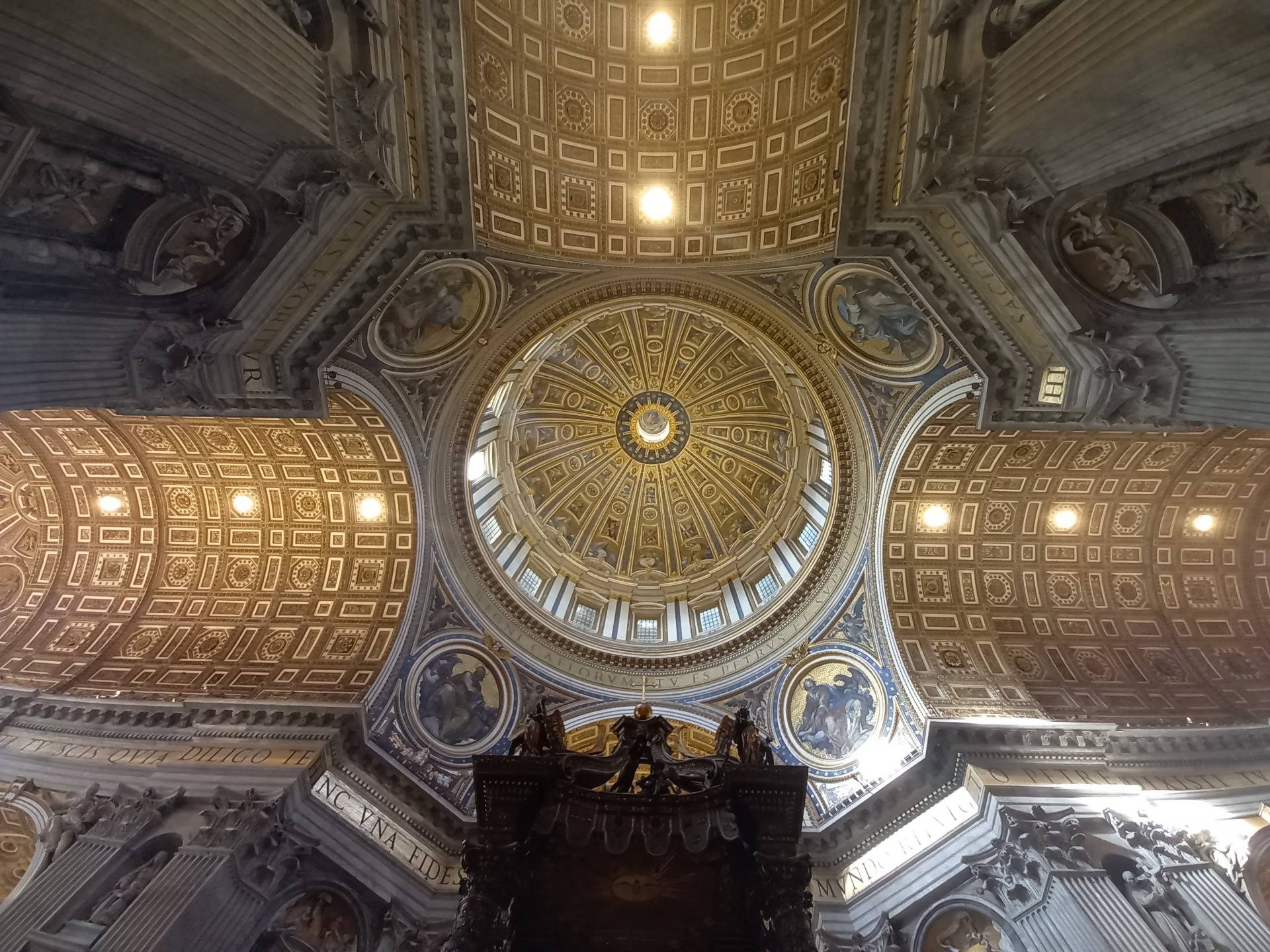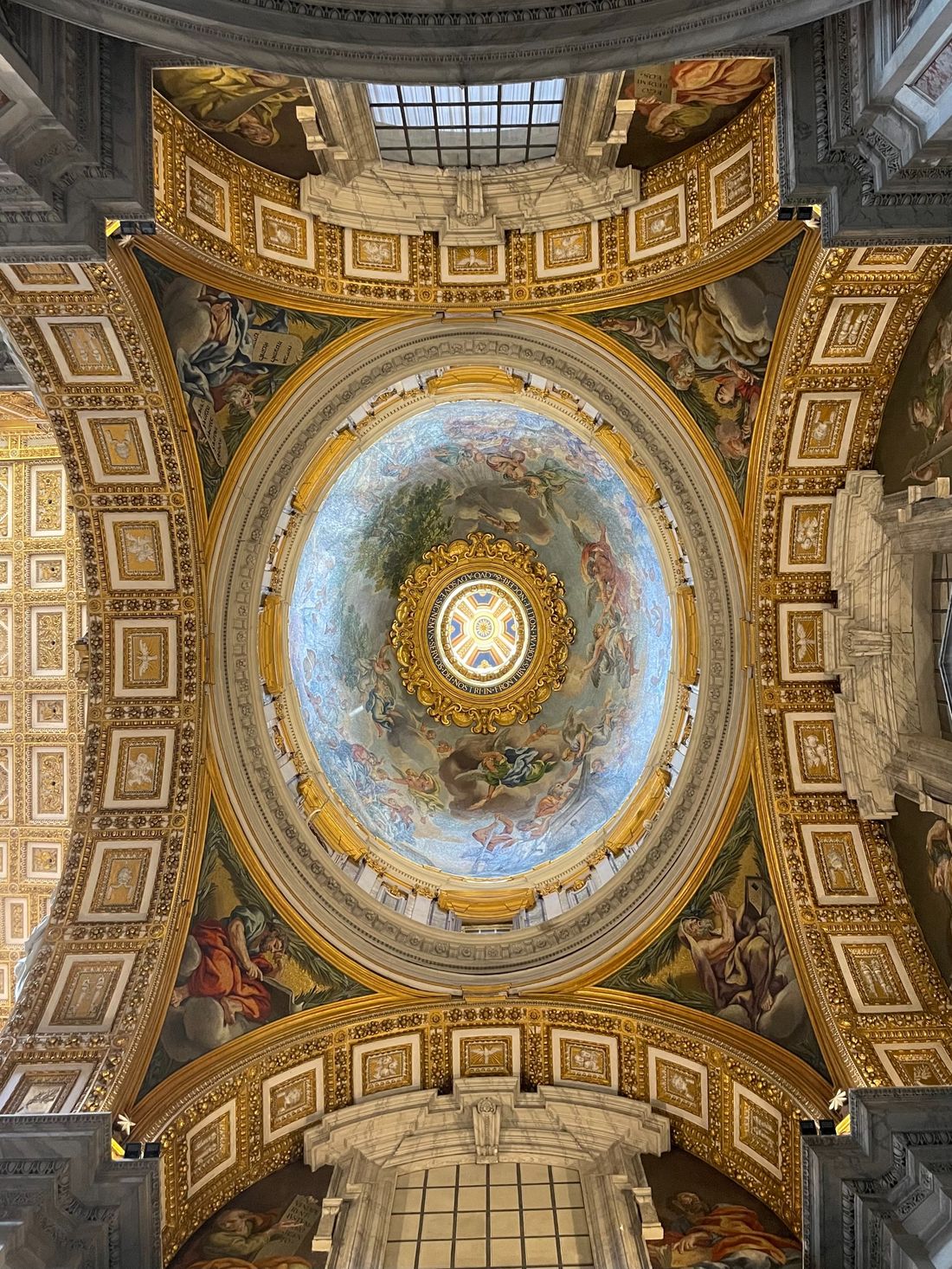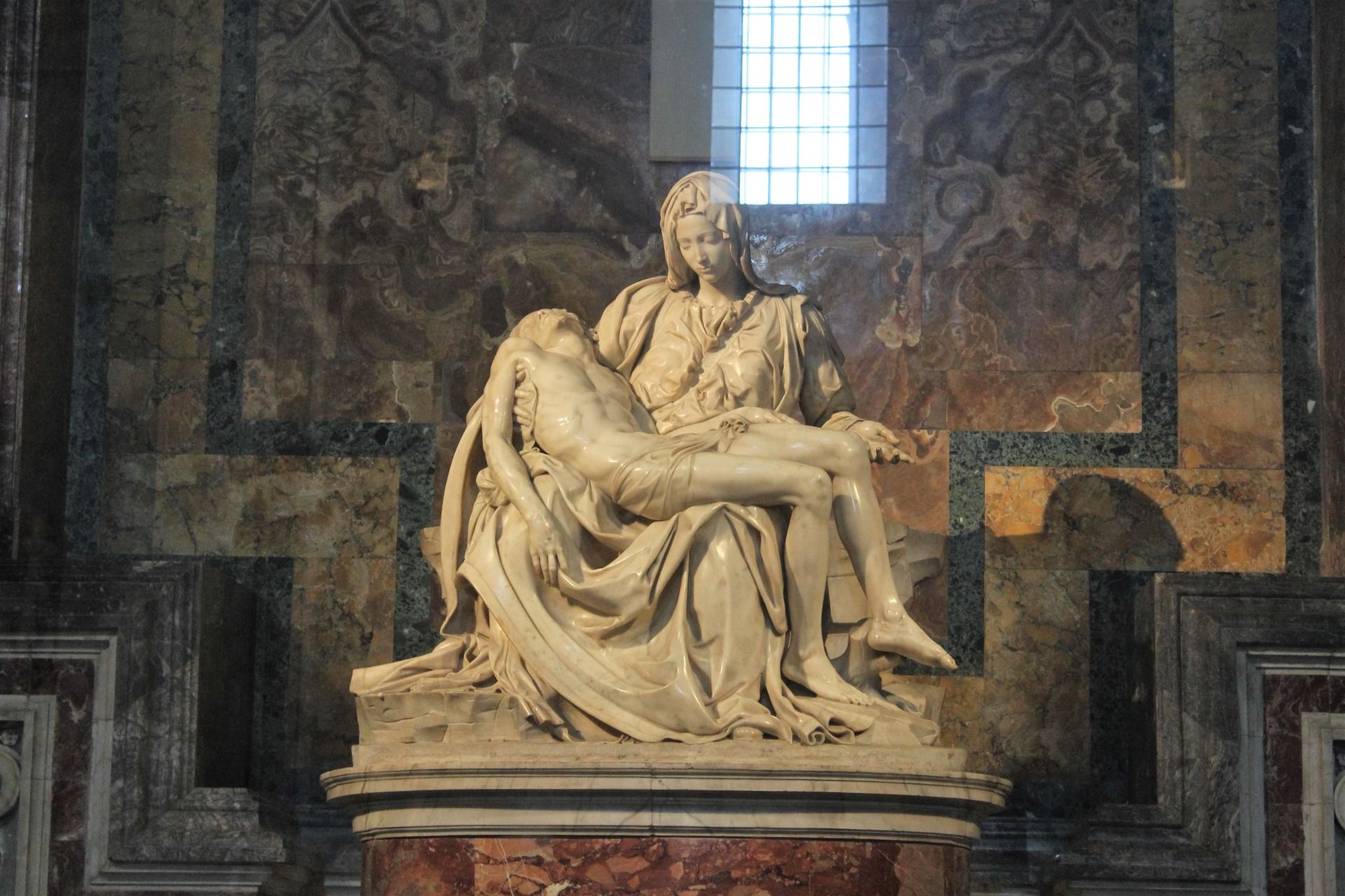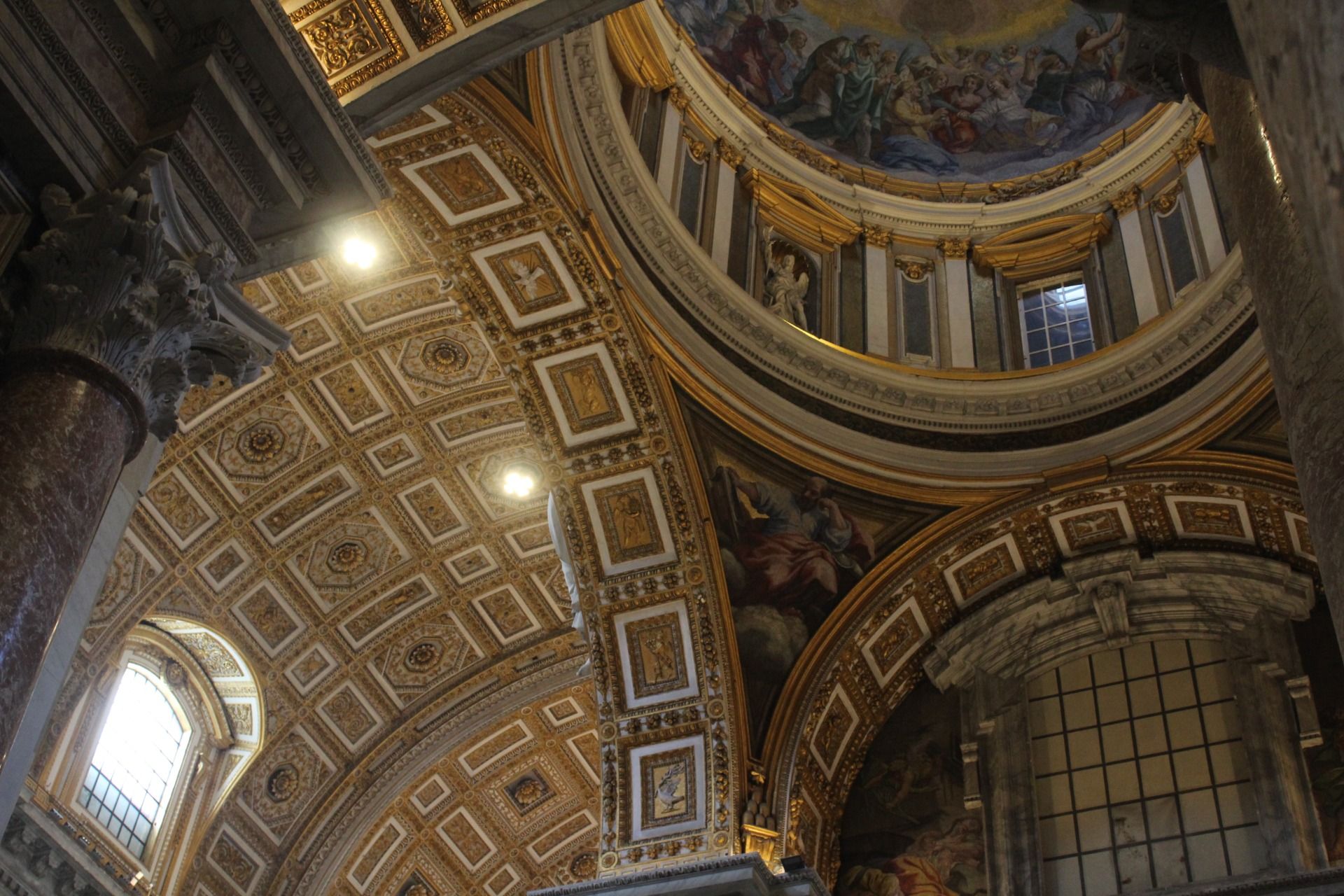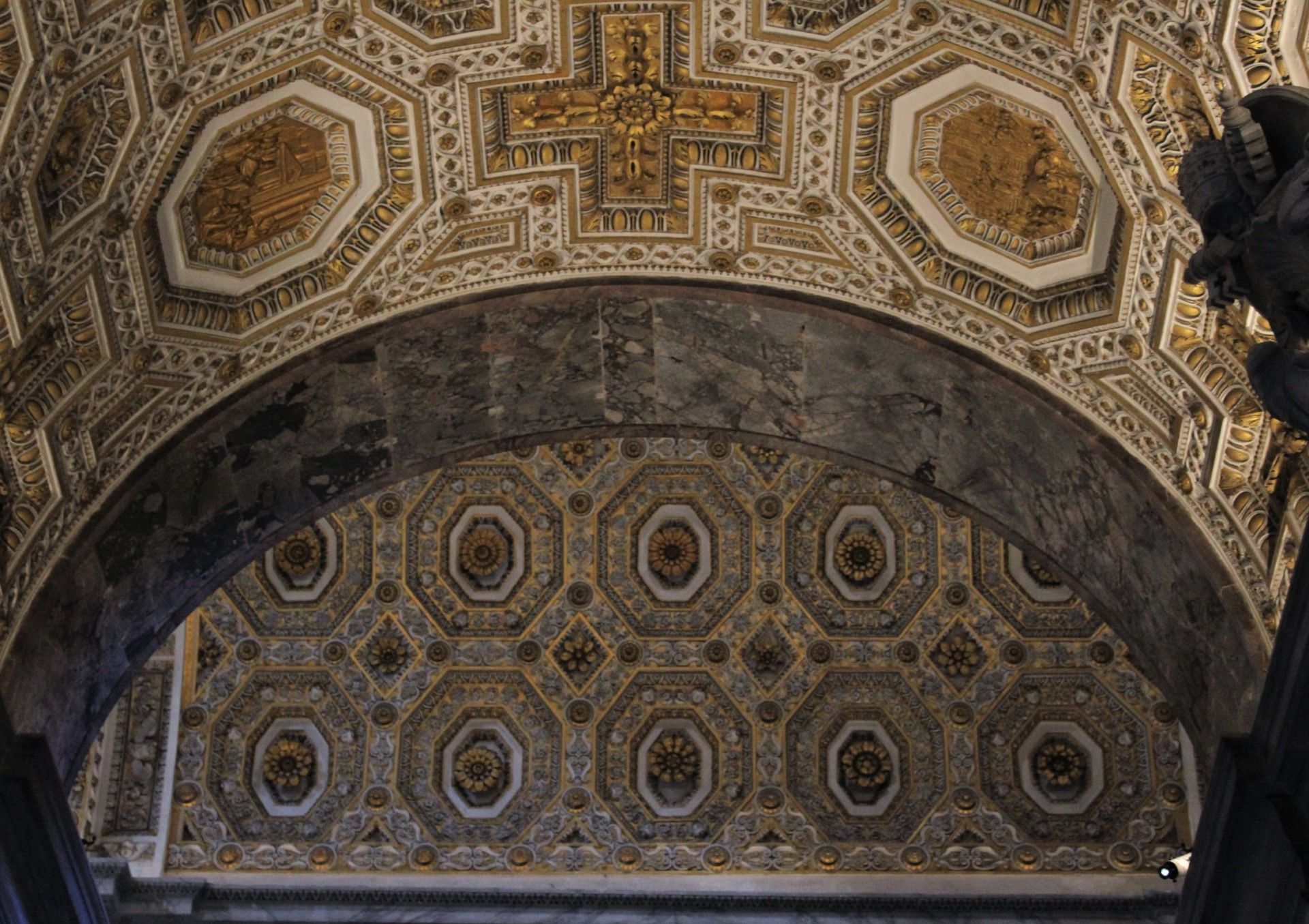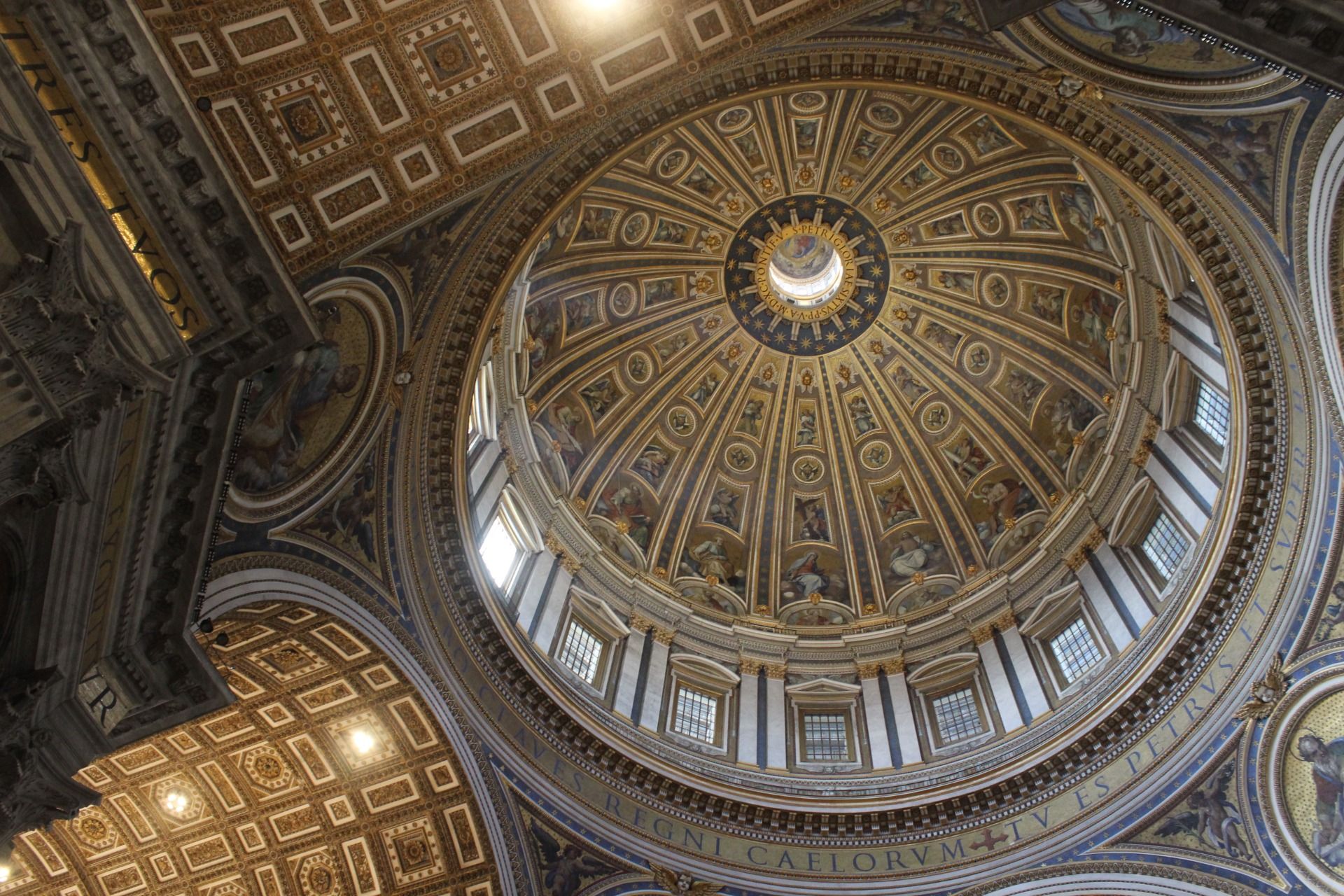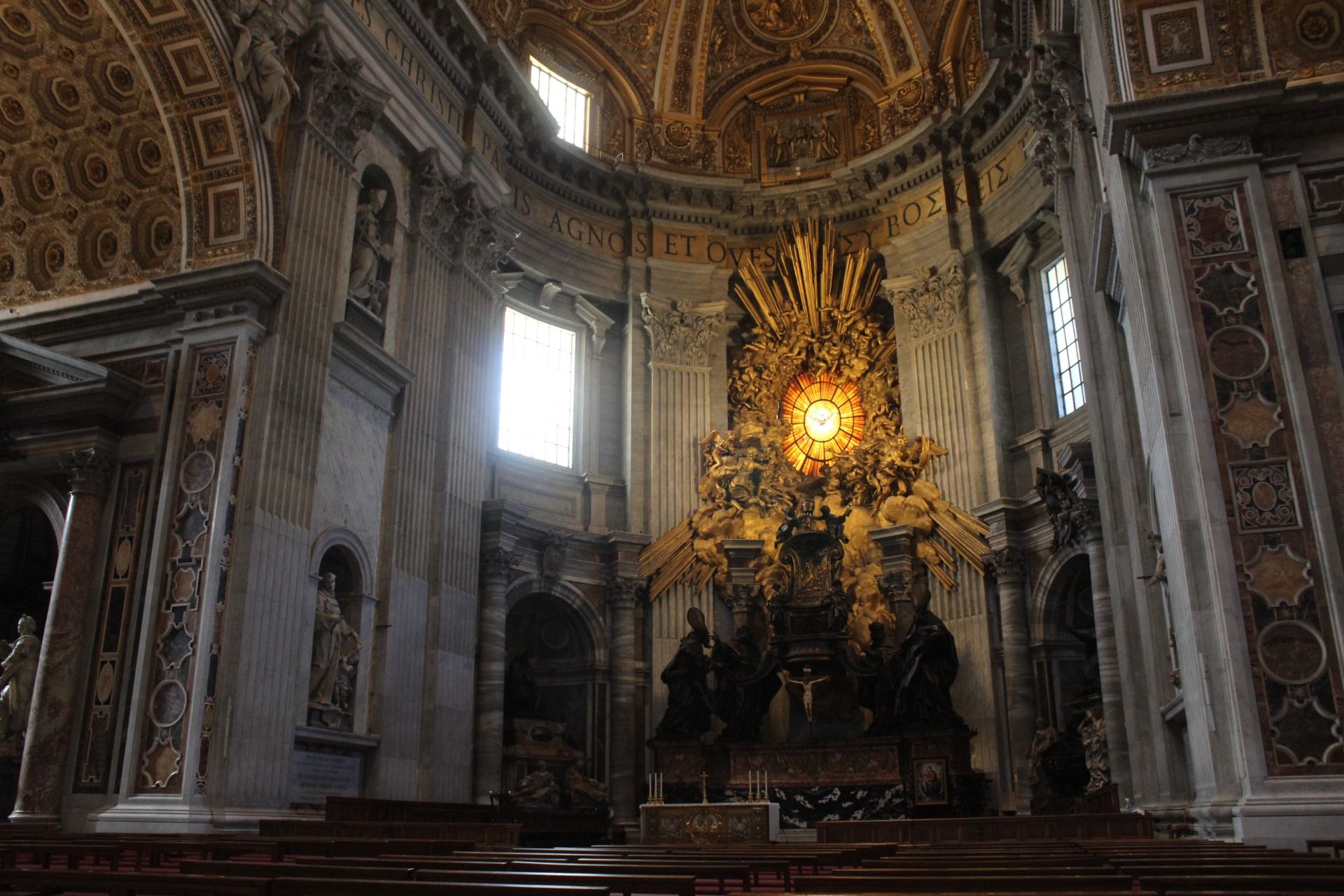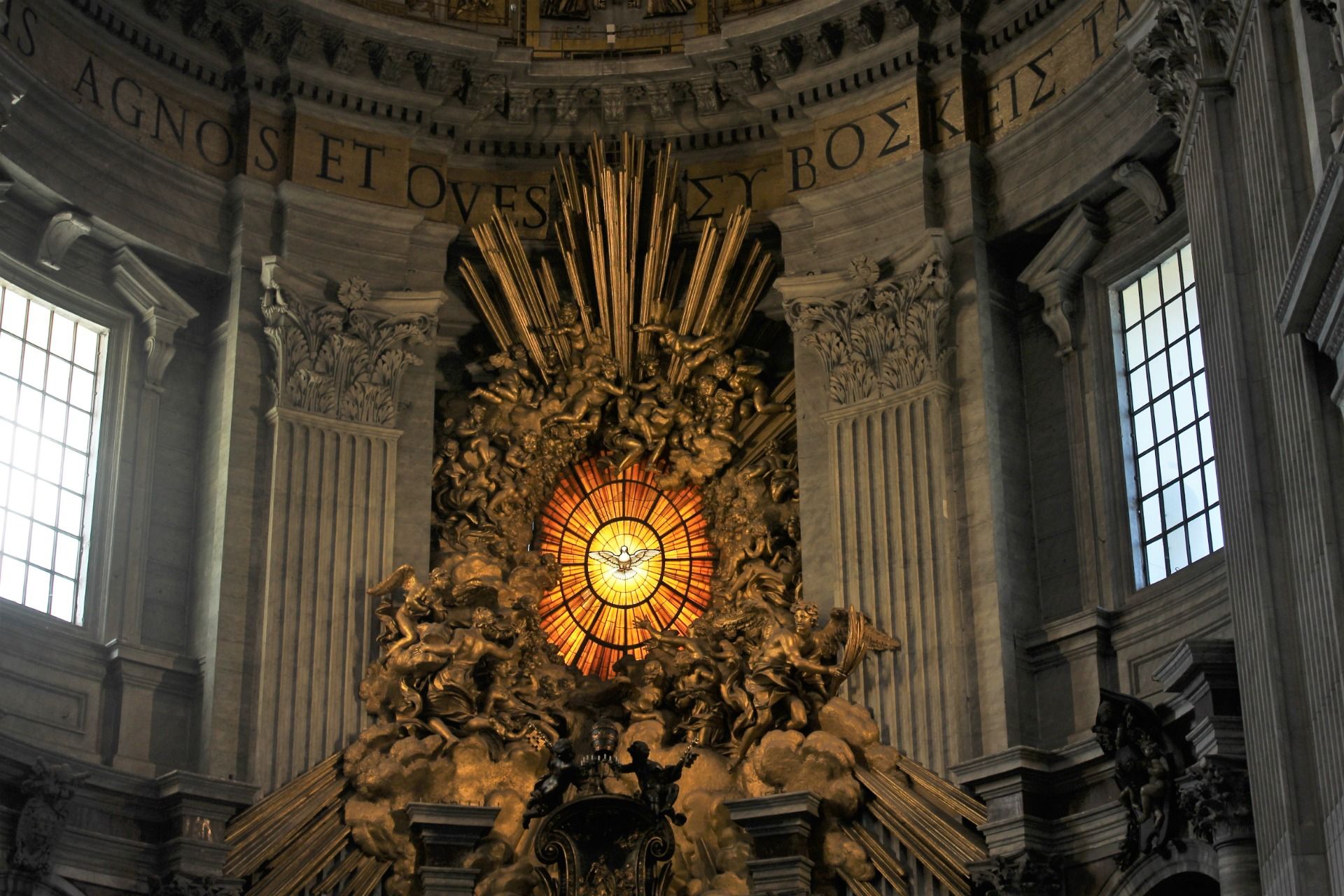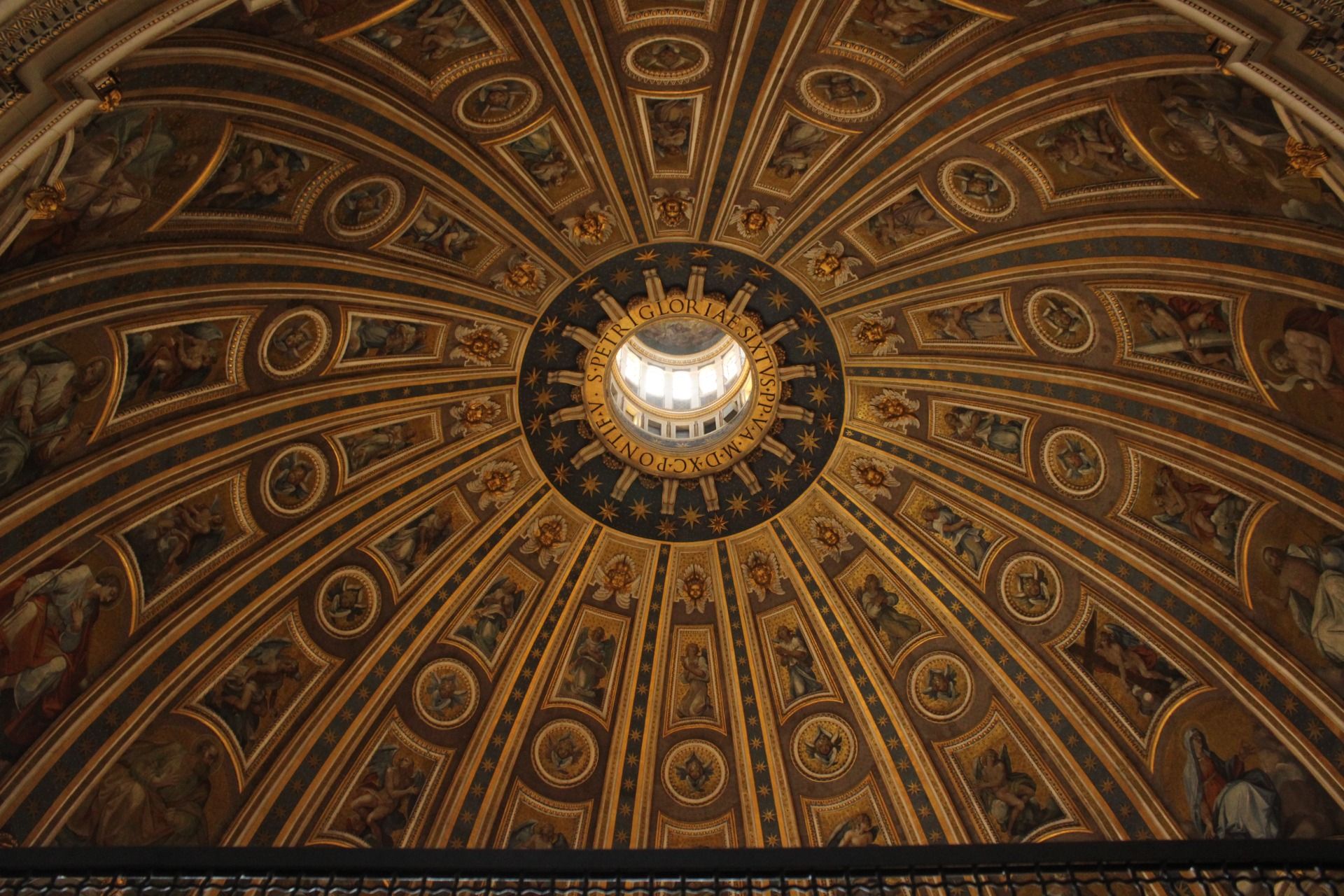[ENG]
One of the biggest surprises in life that has ever happened to me was the first entry into St. Peter in the Vatican. I remember that it was then 2016, that is, the jubilee year announced by Pope Francis called the "Extraordinary Jubilee of Mercy". On this occasion, the basilica was entered through the Porta Sancta, i.e. the holy door opened only in jubilee years (once every 25 years). This door is wide enough for two or even three people to pass through it at the same time. Unfortunately, in St. Peter's Day Mass with the Pope had just finished, so the number of people entering the temple was huge and it was natural that a very long line had formed. After about 30 minutes of waiting in line, it was my turn. Finally, I was able to enter St. Peter for the first time. What a great surprise I was when, after entering the interior, it turned out that it was empty ... Those several thousand people who were constantly entering the basilica for 30 minutes continuously for 30 minutes suddenly scattered around the huge interior and it was almost empty inside. The basilica is the second largest church in the world with an area of 23,000 square meters and there is simply no such wave of tourists who would flood its interior, which makes it very comfortable to visit.
[PL]
Jedno z największych zaskoczeń w życiu jakie kiedykolwiek mnie spotkało, to pierwsze wejście do Bazyliki św. Piotra na Watykanie. Pamiętam, że był wówczas rok 2016, czyli trwał ogłoszony przez papieża Franciszka rok jubileuszowy nazwany „Nadzwyczajnym Jubileuszem Miłosierdzia”. Z tej okazji do bazyliki wchodziło się przez Porta Sancta, czyli święte drzwi otwierane wyłącznie w latach jubileuszowych (raz na 25 lat). Te drzwi są na tyle szerokie, że z powodzeniem mogły przechodzić przez nie dwie, a nawet trzy osoby jednocześnie. Niestety na Placu św. Piotra właśnie zakończyła się msza z udziałem Papierza, więc liczba ludzi wchodzących do świątyni była ogromna i naturalne, że utworzyła się bardzo długa kolejka. Mniej więcej po 30 minutach czekania w kolejce przyszła kolej i na mnie. Wreszcie mogłem wejść do bazyliki św. Piotra po raz pierwszy. Jakie wielkie było moje zaskoczenie, gdy po wejściu do wnętrza okazało się, że panuje tam pustka… Te kilka tysięcy ludzi którzy ciągłą kolejką wchodzili nieustannie przez 30 min do bazyliki nagle gdzieś się rozpierzchły po potężnym wnętrzu i w środku było niemal pusto. Bazylika jest drugim największym kościołem na świecie o powierzchni 23 000 m² i po prostu nie ma takiej fali turystów, którzy zdołaliby zalać jej wnętrze, co sprawia, że zwiedza się ją bardzo komfortowo.
[ENG]
The building that now stands on the Vatican hill has not always been there. We know from historical records about at least two other buildings preceding the Renaissance-Baroque church. The first is Nero's Circus, which was part of Nero's gardens, the entertainment district of the time. Usually, chariot races took place there, but after the famous fire of Rome described in Henryk Sienkiewicz's book Quo Vadis, Christians who were accused of setting fire to Rome were executed near the circus. One of the Christians murdered at that time was the crucified Peter the Apostle, who was buried in a modest grave right next to the circus. The circus ceased to be used in the 2nd century AD and around 324, on the initiative of Emperor Constantine the Great, a basilica was erected at the burial site of Peter the Apostle. It lasted until the 16th century, when, due to the poor technical condition, it was decided to demolish it and build a new, even more magnificent temple. Construction began in 1506 and took so long that the main architects changed many times during its construction, because they simply did not live to the end of the construction works. The builders of the temple were such famous artists as Donato Bramante, Rafael Santi and Michelangelo. The basilica was not consecrated until 1626.
[PL]
Budowla która obecnie stoi na watykańskim wzgórzu nie była tam od zawsze. Z historycznych zapisów wiemy o co najmniej dwóch innych budowlach poprzedzających renesansowo-barokowy kościół. Pierwsza z nich to Cyrk Nerona, który stanowił część ogrodów Nerona czyli ówczesnej dzielnicy rozrywki. Zwykle odbywały się tam wyścigi rydwanów, ale po słynnym pożarze Rzymu opisanym w książce Henryka Sienkiewicza Quo Vadis, w okolicach cyrku odbyła się kaźni chrześcijan których oskarżono o podpalenie Rzymu. Jednym z zamordowanych wówczas chrześcijan był ukrzyżowany Piotr Apostoł, którego pochowano w skromnym grobie tuż przy cyrku. Cyrk przestał być użytkowany w II wieku naszej ery a w okolicach roku 324 z inicjatywy cesarza Konstantyna Wielkiego wzniesiono w miejscu pochówku Piotra Apostoła Bazylikę. Trwała ona aż do XVI wieku, kiedy to z uwagi na zły stan techniczny podjęto decyzję o zburzeniu jej i zbudowaniu nowej, jeszcze wspanialszej świątyni. Budowę rozpoczęto w roku 1506 roku i trwała ona tak długo, że w trakcie jej budowy główni architekci zmieniali się wielokrotnie, gdyż po prostu nie dożyli końca prac budowlanych. Budowniczymi świątyni byli tak słynni artyści jak Donato Bramante, Rafael Santi czy Michał Anioł. Bazylikę konsekrowano dopiero w 1626 roku.
[ENG]
However, before we enter the basilica, we have to go through a really large vestibule. It is above him that there are characteristic figures of the 11 apostles (all the apostles except Peter), John the Baptist and the figure of Jesus in the center. The entire vestibule is 13 meters deep and you can enter the interior of the basilica through five decorative doors.
[PL]
Nim jednak wejdziemy do bazyliki musimy przejść przez naprawdę pokaźnych rozmiarów przedsionek. To właśnie nad nim znajdują się charakterystyczne postacie 11 apostołów (wszyscy apostołowie oprócz Piotra) , Jana Chrzciciela oraz znajdująca się pośrodku figura Jezusa. Cały przedsionek ma 13 metrów głębokości i można z niego poprzez pięć ozdobnych drzwi wejść wprost do wnętrza bazyliki.
[ENG]
After entering the basilica, the most characteristic point of the whole is the crossing of the naves and the confession of St. Peter located there. It is an altar placed directly above the tomb of the Apostle along with an ornate canopy designed and made by Gianlorenzo Bernini. Although it is 28 meters high, it does not overwhelm with its size, because the space created at the intersection of the aisles under the dome of the basilica is so huge that it would easily fit 4 town hall towers from the Krakow market. In the corners of this space there are huge statues of St. Andrew, St. Veronica, St. Longinus and St. Helena. Under the pillars depicting St. Andrew and St. Longinus has descents to the Vatican Grottoes, in which numerous papers are buried. Unfortunately, in front of the entrance there was a sign prohibiting taking photos inside. The entire basilica is filled with thousands of paintings, sculptures, mosaics, many of which are priceless works of art, but one of the most famous is the famous Pieta by Michelangelo, located right at the entrance to the basilica.
[PL]
Po wejściu do bazyliki najbardziej charakterystycznym punktem całej jest skrzyżowanie naw i znajdująca się tam konfesja św Piotra. Jest to ołtarz umieszczony bezpośrednio nad grobem Apostoła wraz z ozdobnym baldachimem zaprojektowanym i wykonanym przez Gianlorenzo Berniniego. Choć jest wysoki na 28 metrów nie przytłacza swoim rozmiarem, ponieważ przestrzeń powstała na skrzyżowaniu naw pod kopułą bazyliki jest tak ogromna, że bez problemu zmieściłoby się 4 wierze ratuszowe z krakowskiego rynku. W narożnikach tej przestrzeni znajdują się ogromne posągi przedstawiające św. Andrzeja, św. Weronikę, św. Longina i św. Helenę. Pod filarami przedstawiającymi św. Andrzeja i św. Longina znajdują się zejścia do Grot Watykańskich, w których są pochowani są liczni papierze. Niestety przed wejściem znajdowała się tabliczka zakazująca fotografowania we wnętrzu. Cała bazylika przepełniona jest tysiącami obrazów, rzeźb, mozaik, z których wiele to bezcenne dzieła sztuki, ale jednym z najbardziej słynnych jest znajdująca się zaraz przy wejściu do bazyliki jest słynna Pieta Michała Anioła.
Travel Resources for your trip to Italy
Recommended by TravelFeed
Flights: We recommend checking Kiwi.com to find the best and cheapest flights to Italy.
Accomodation: Explore the best places to stay in Italy on Booking.com, Agoda and Hostelworld.
Travel Insurance: Medical emergencies abroad can be pricey, but travel health insurance is not. We always use SafetyWing for affordable and reliable coverage.
Car Rental: For hassle-free car hiring, DiscoverCars is our trusted choice with a wide selection of vehicles.
Internet: Got an eSIM compatible phone? Airalo is perfect for reliable internet access during your trip. Just install it before you go, and you're set!
Day Trips & Tours: We recommend GetYourGuide for a variety of well-organized and enjoyable activities.
Travel Planner: Need a hand planning? Our free travel planner chatbot is your personal guide to Italy. Chat now.
Disclosure: Posts on TravelFeed may contain affiliate links. See affiliate disclosure.
